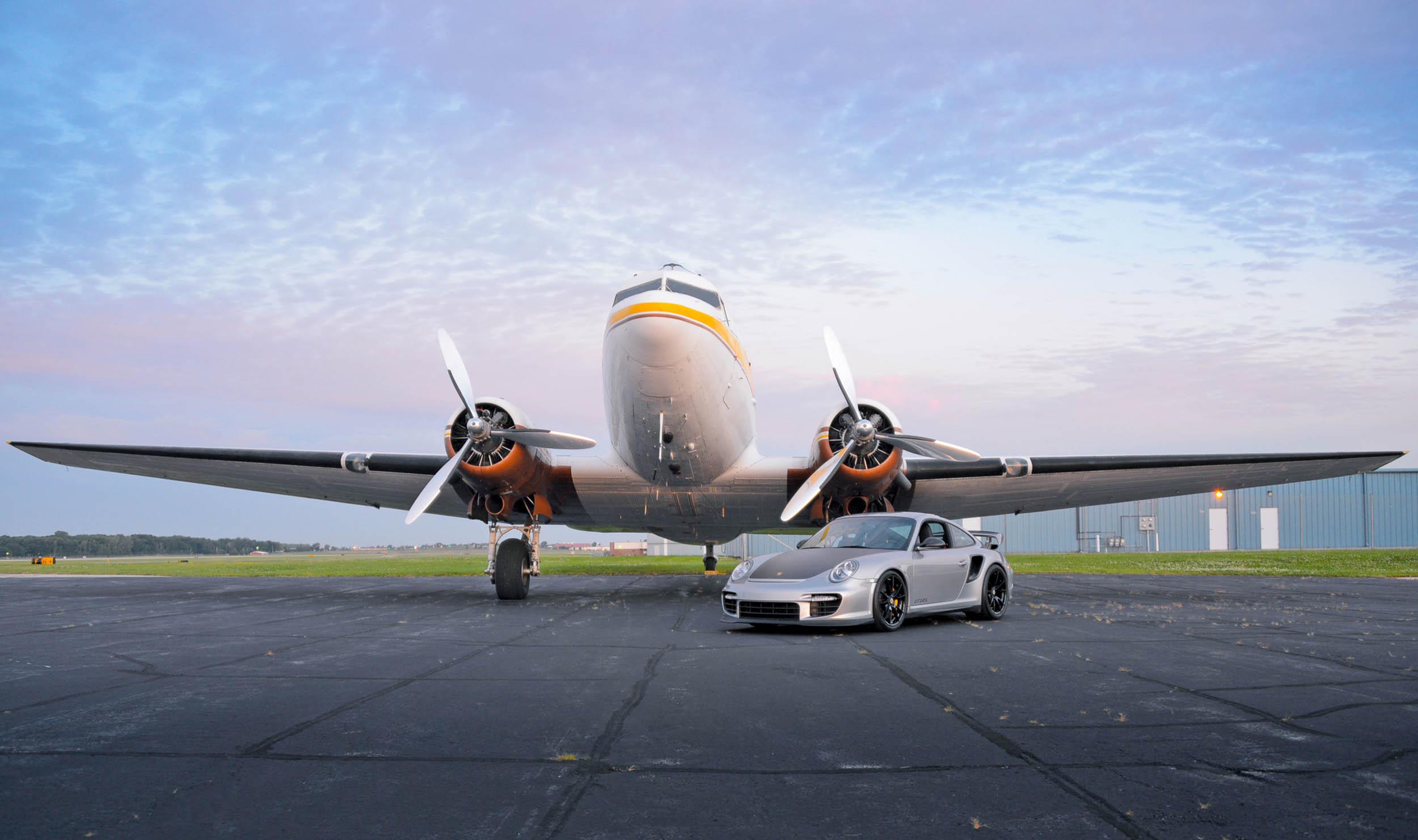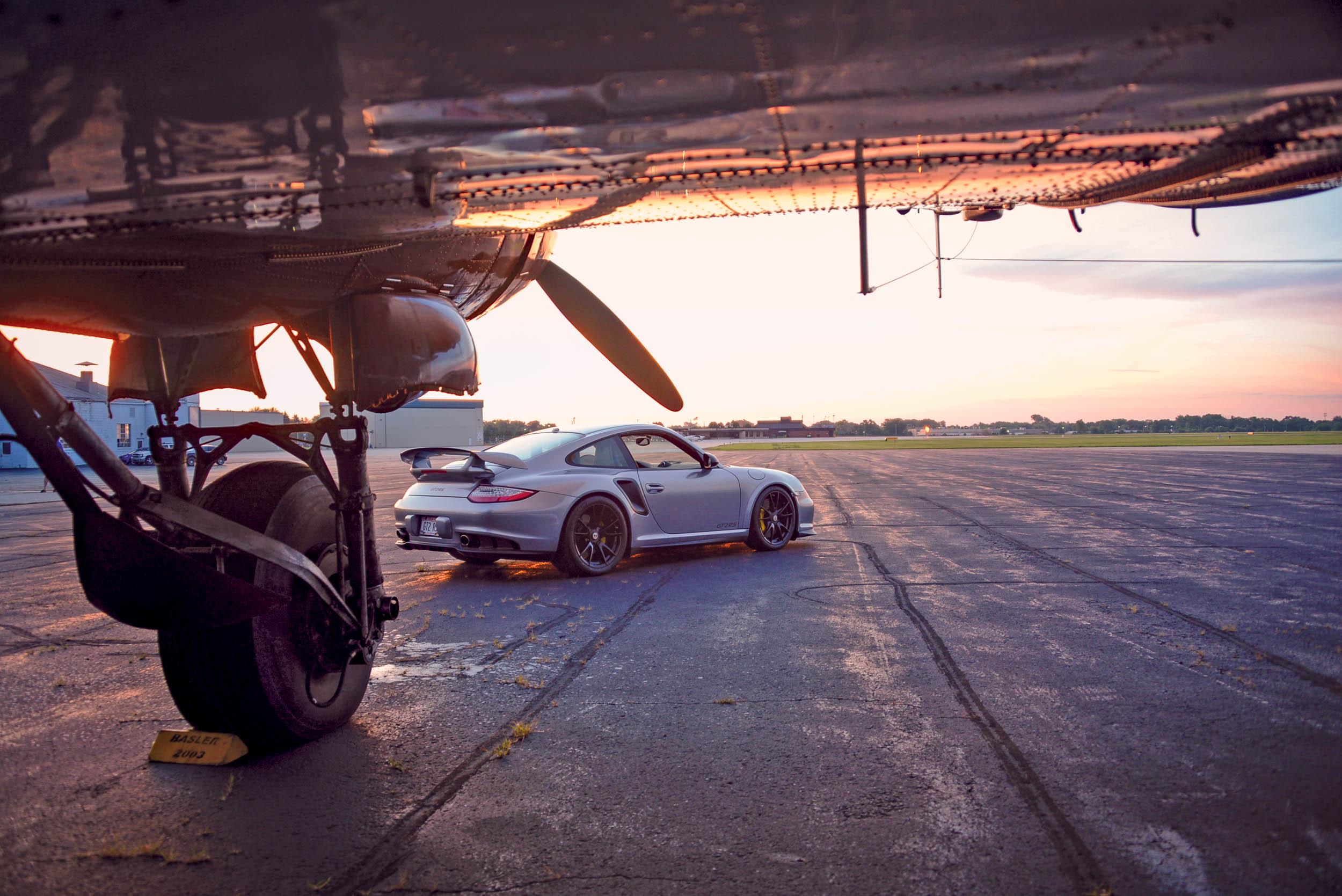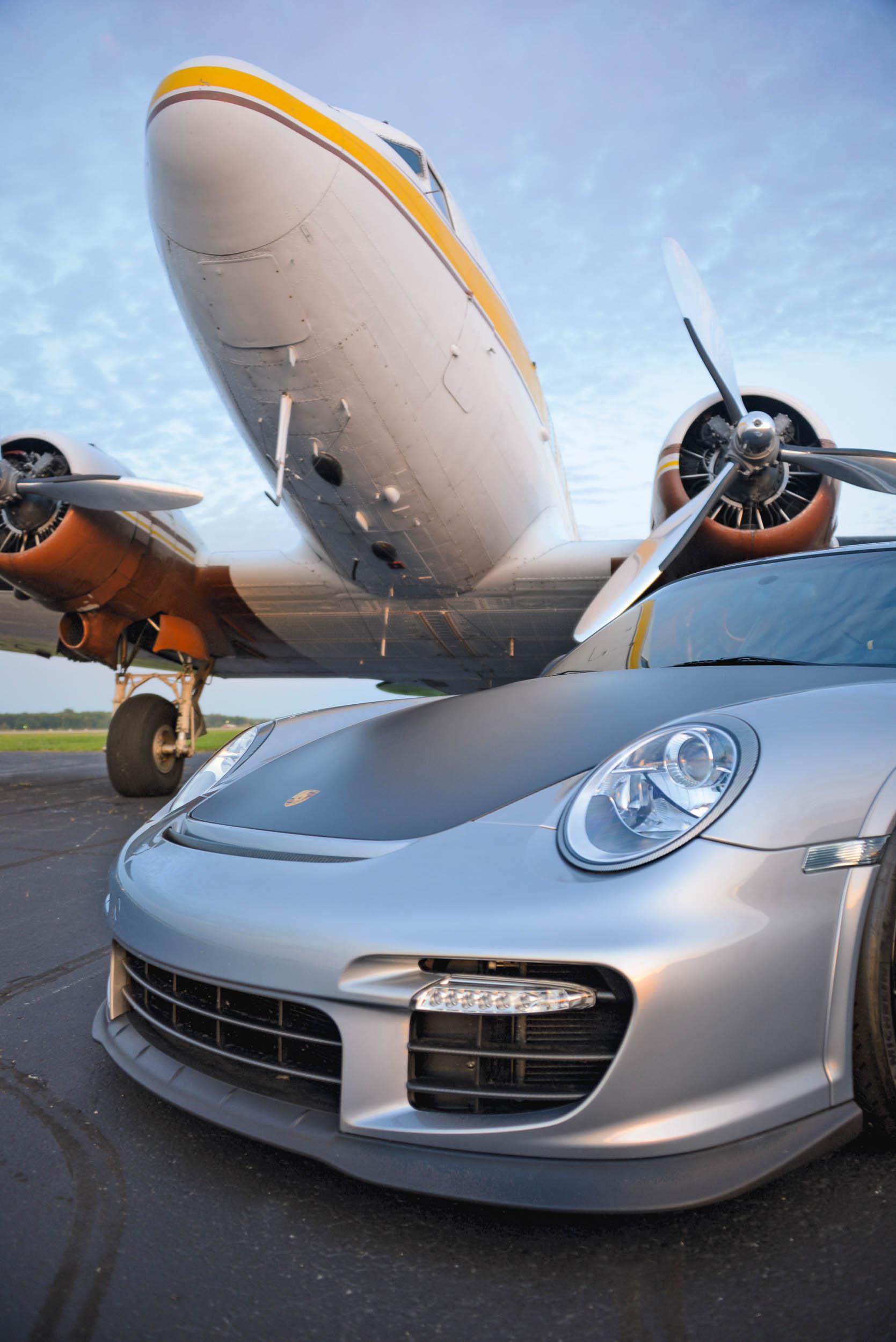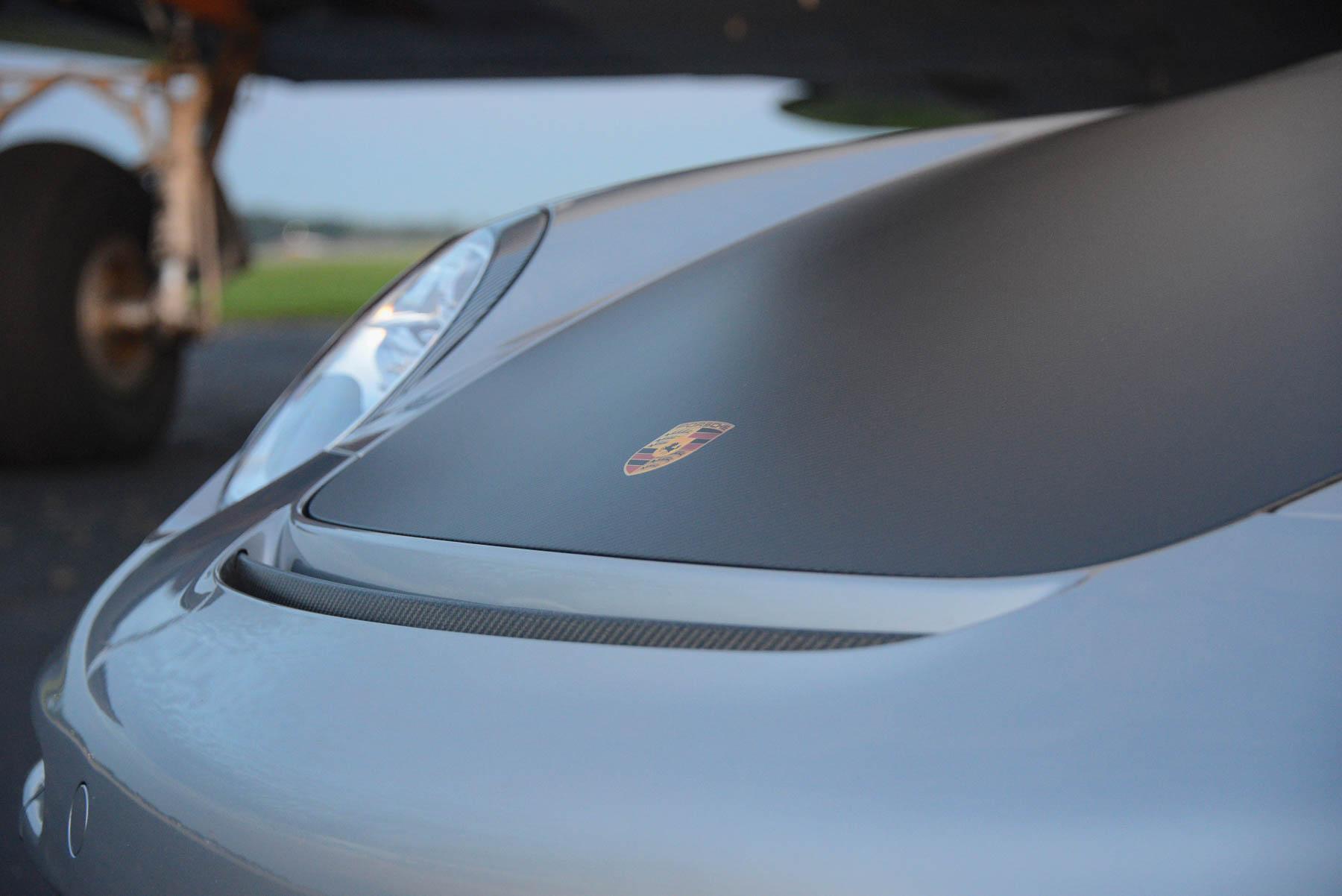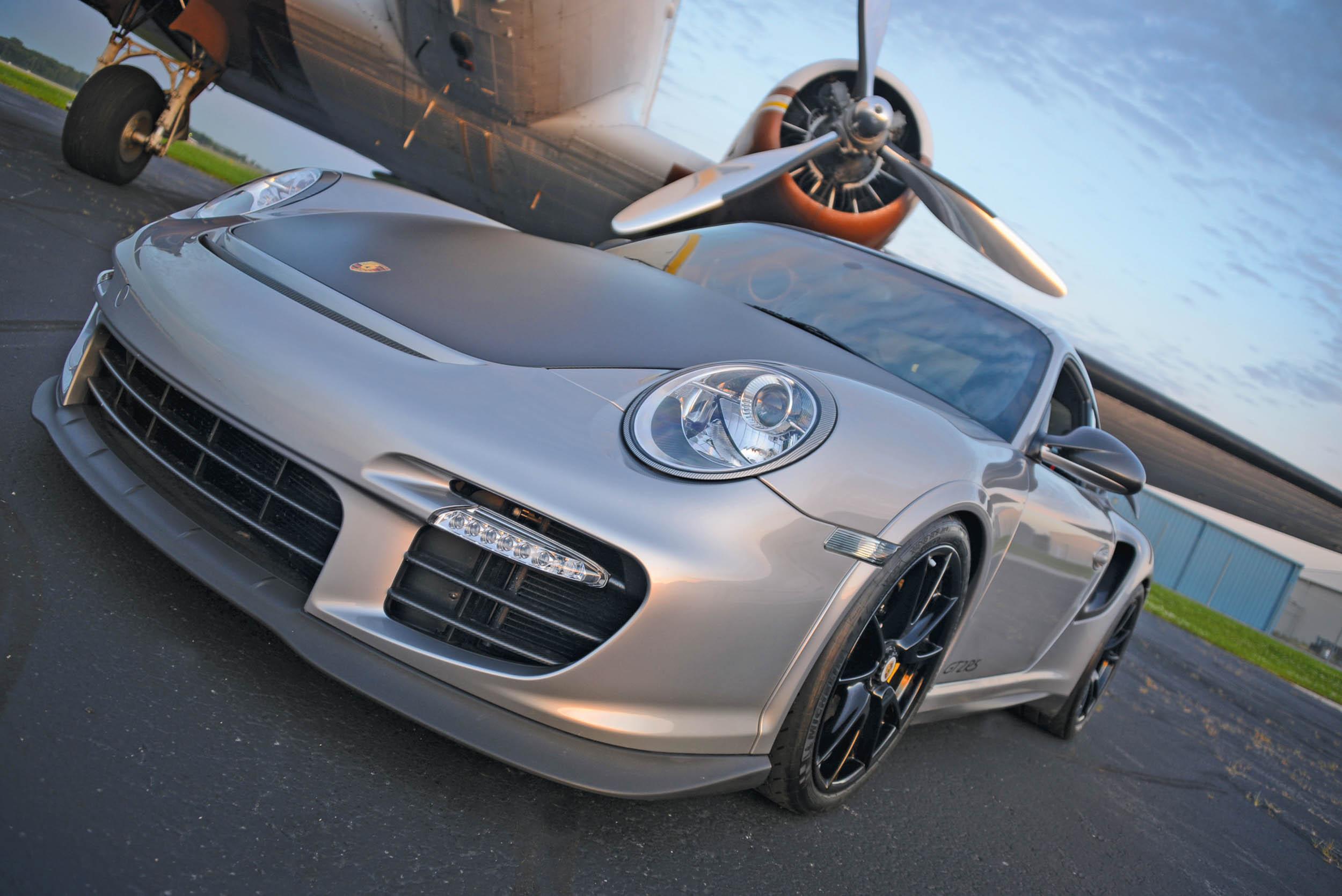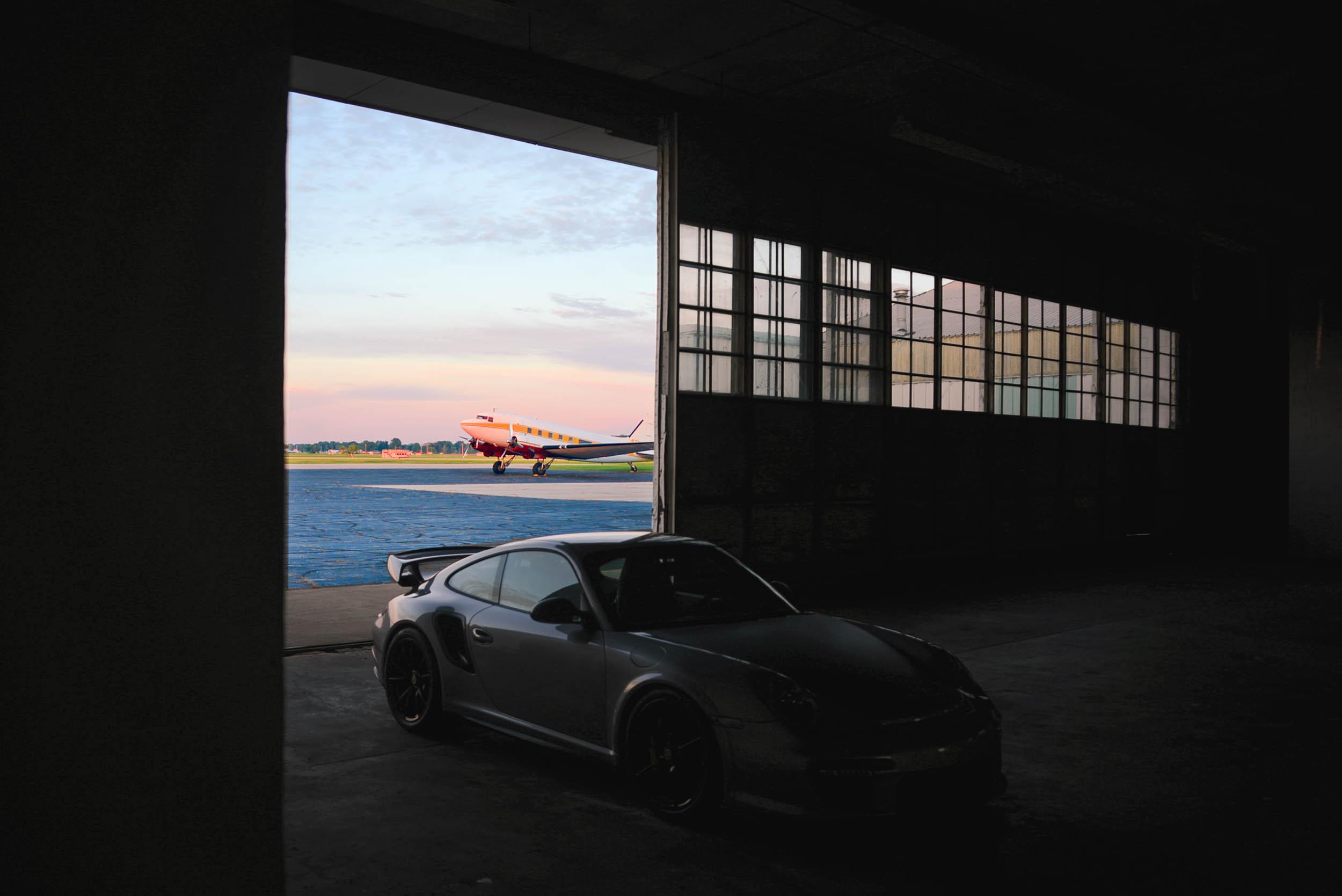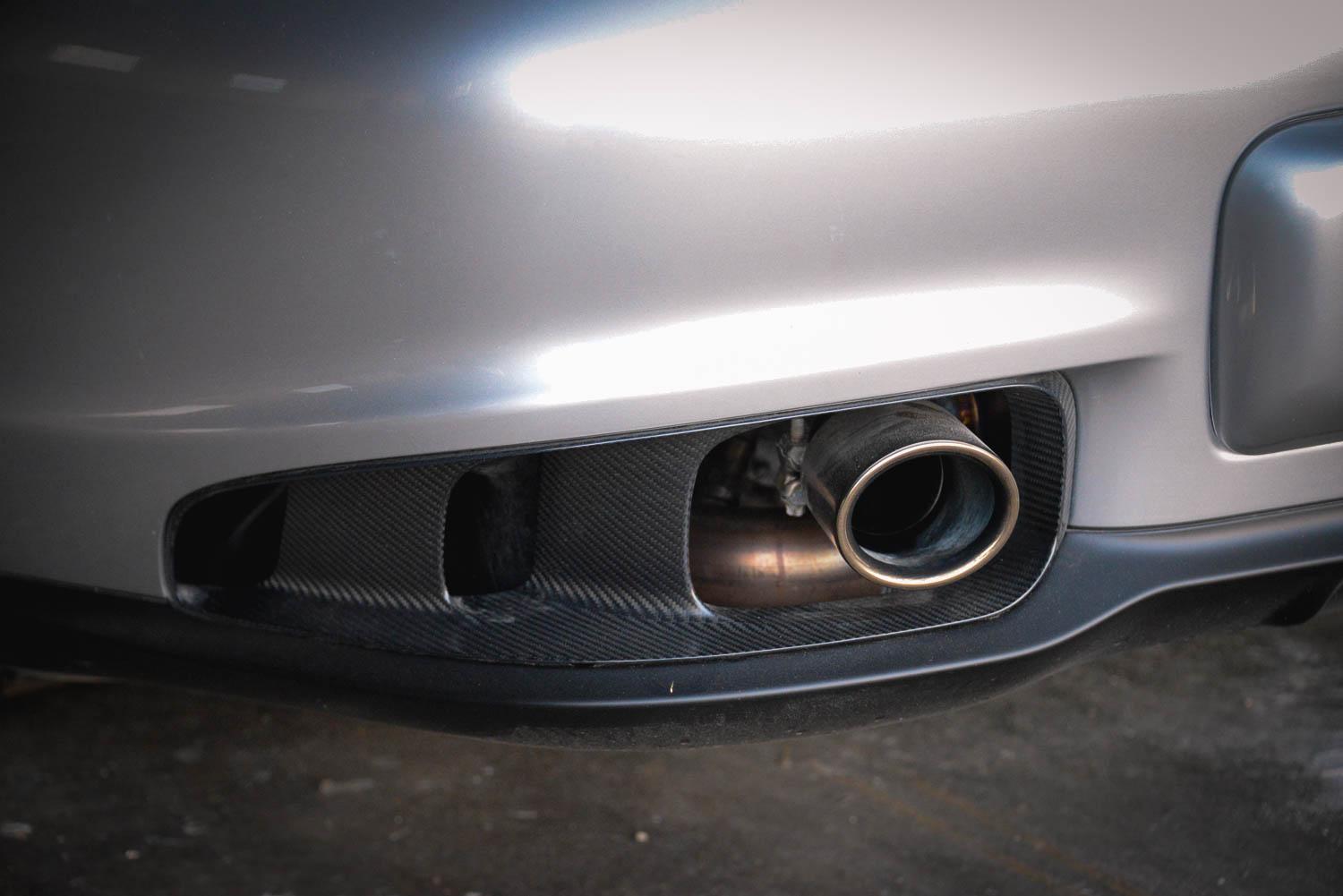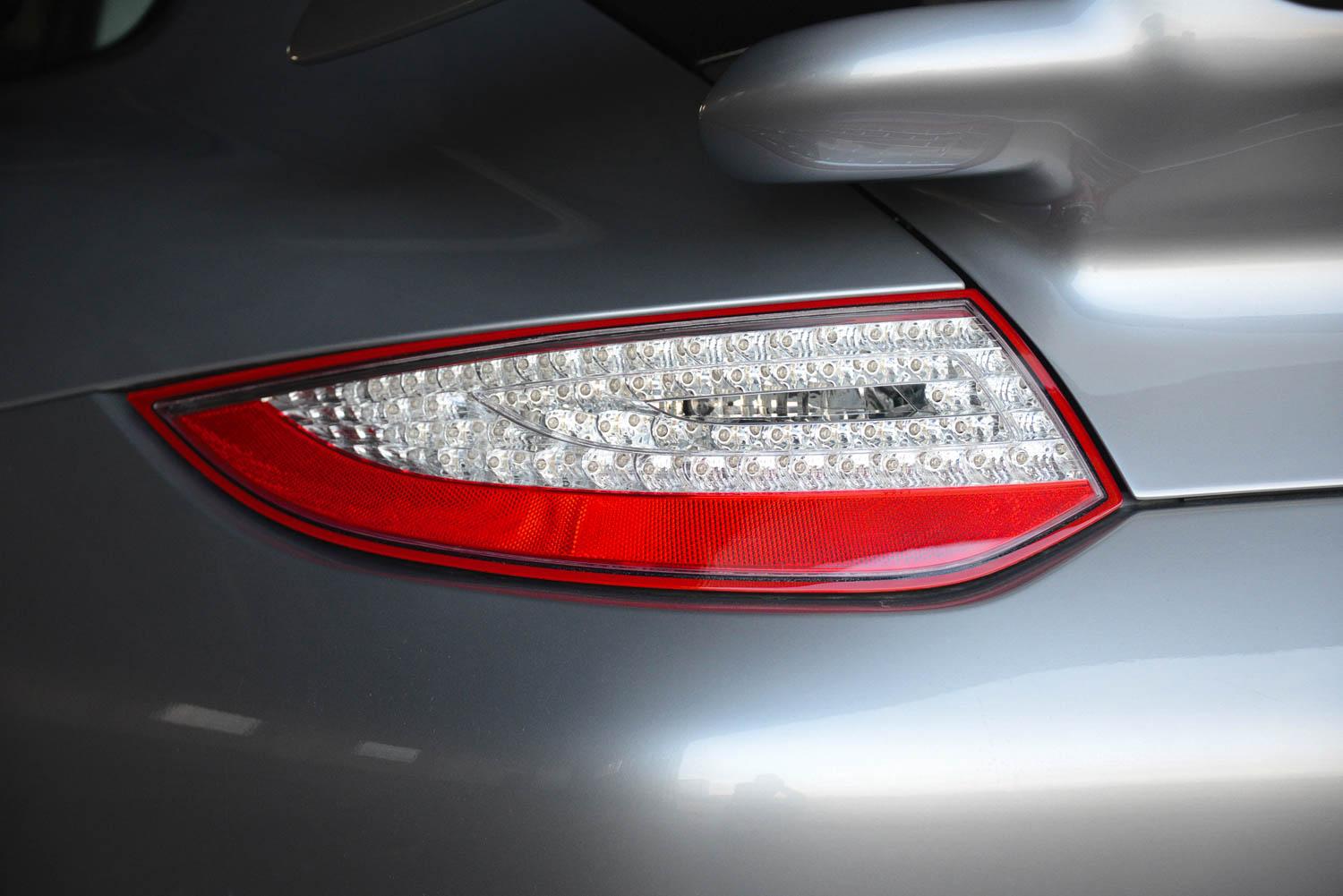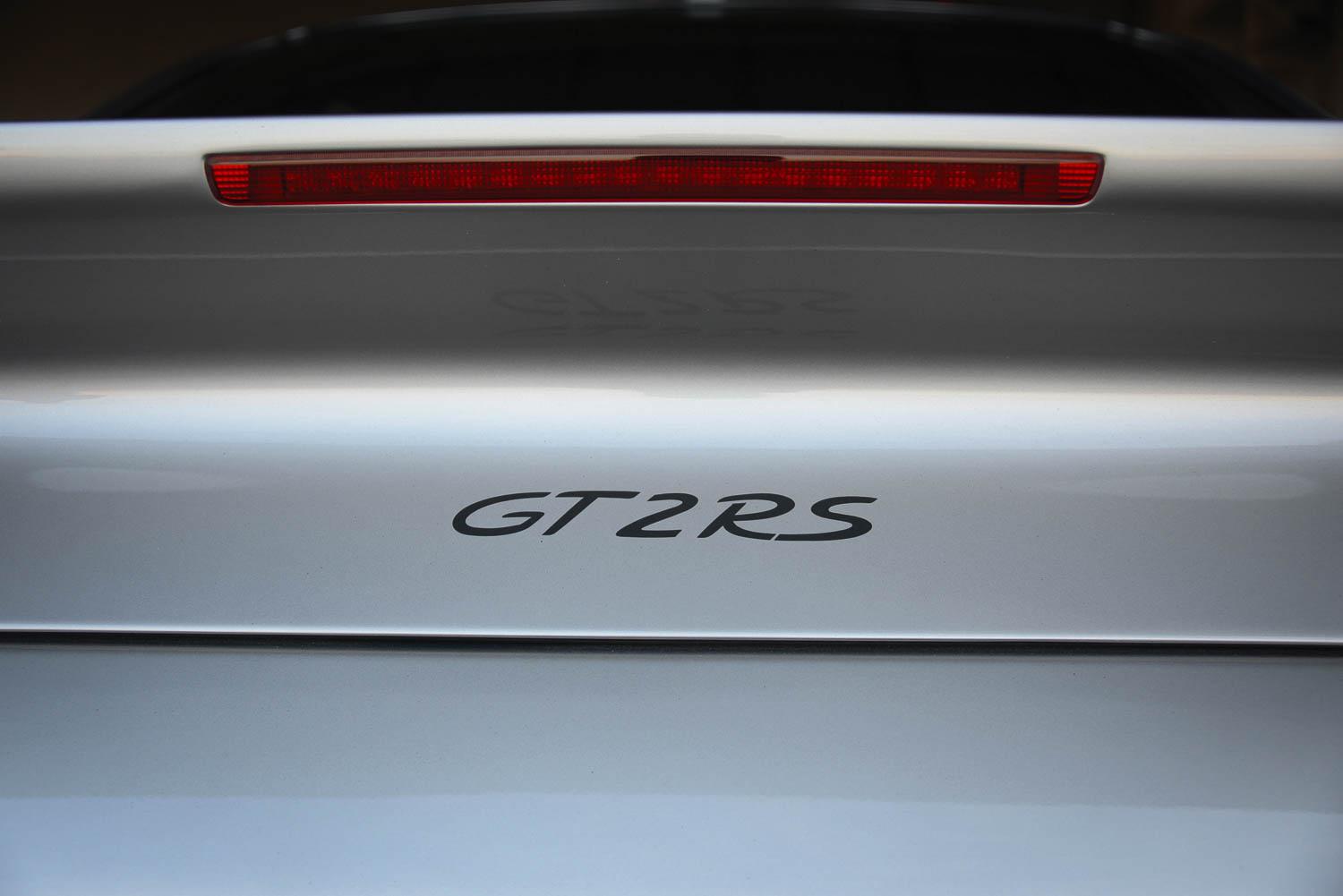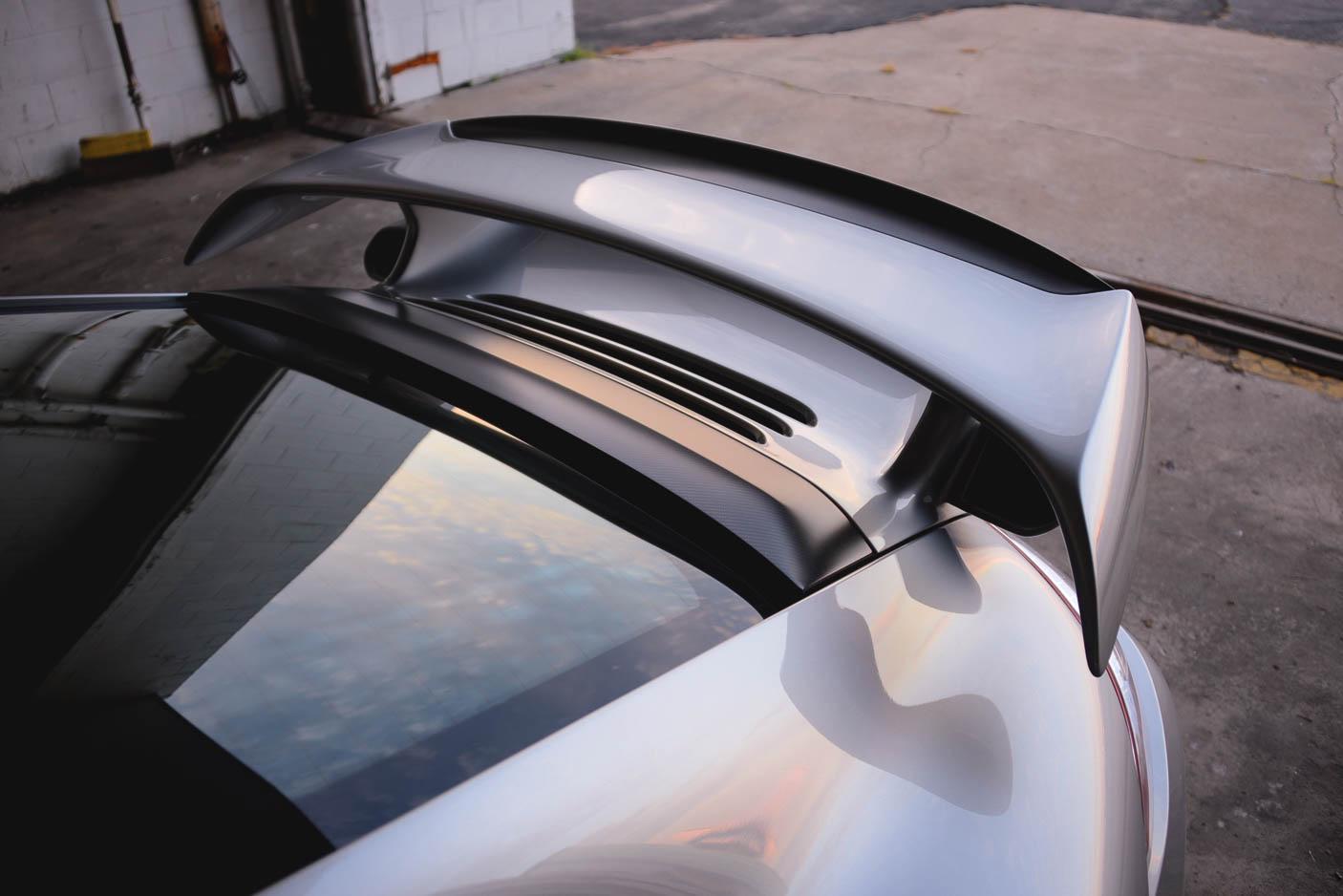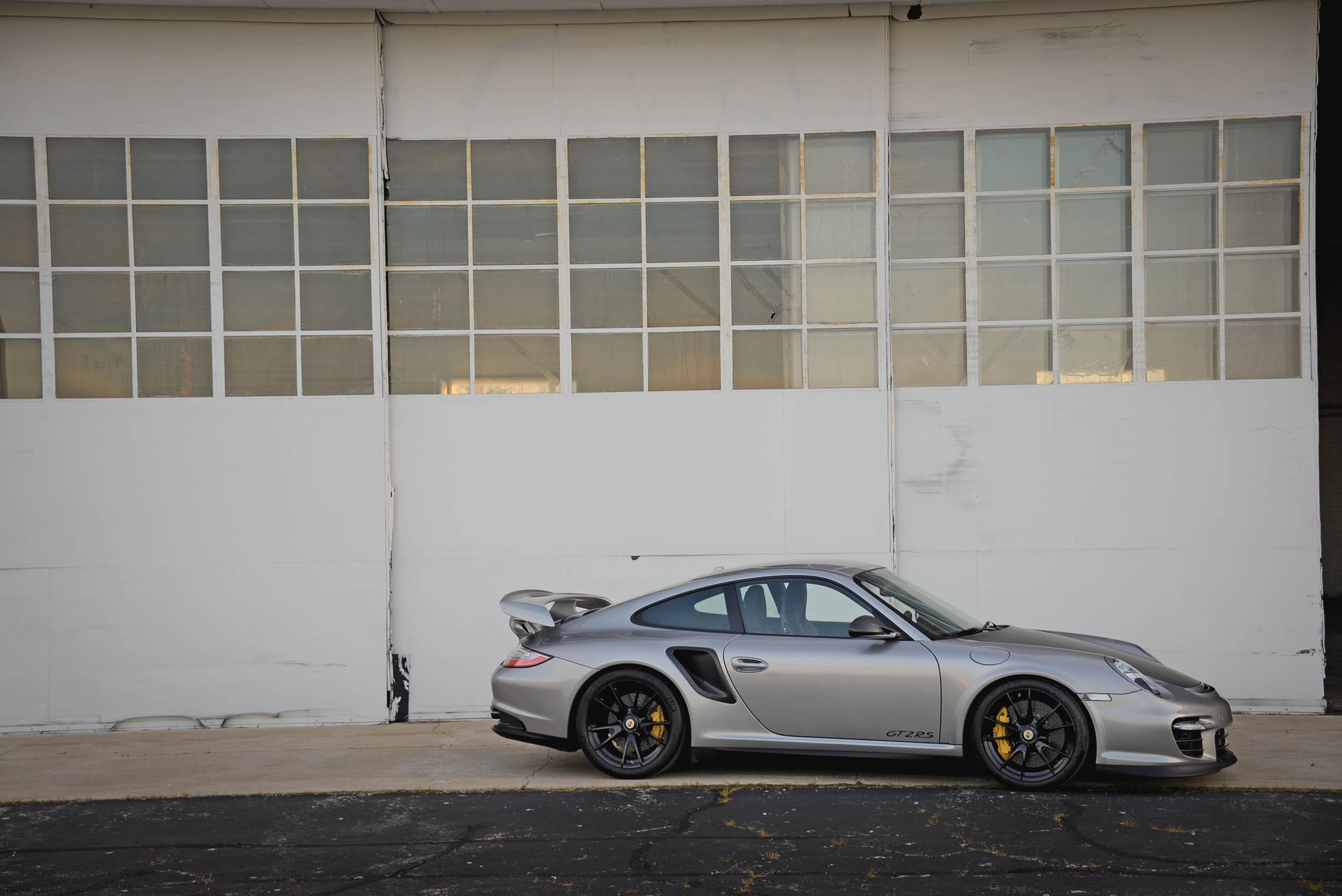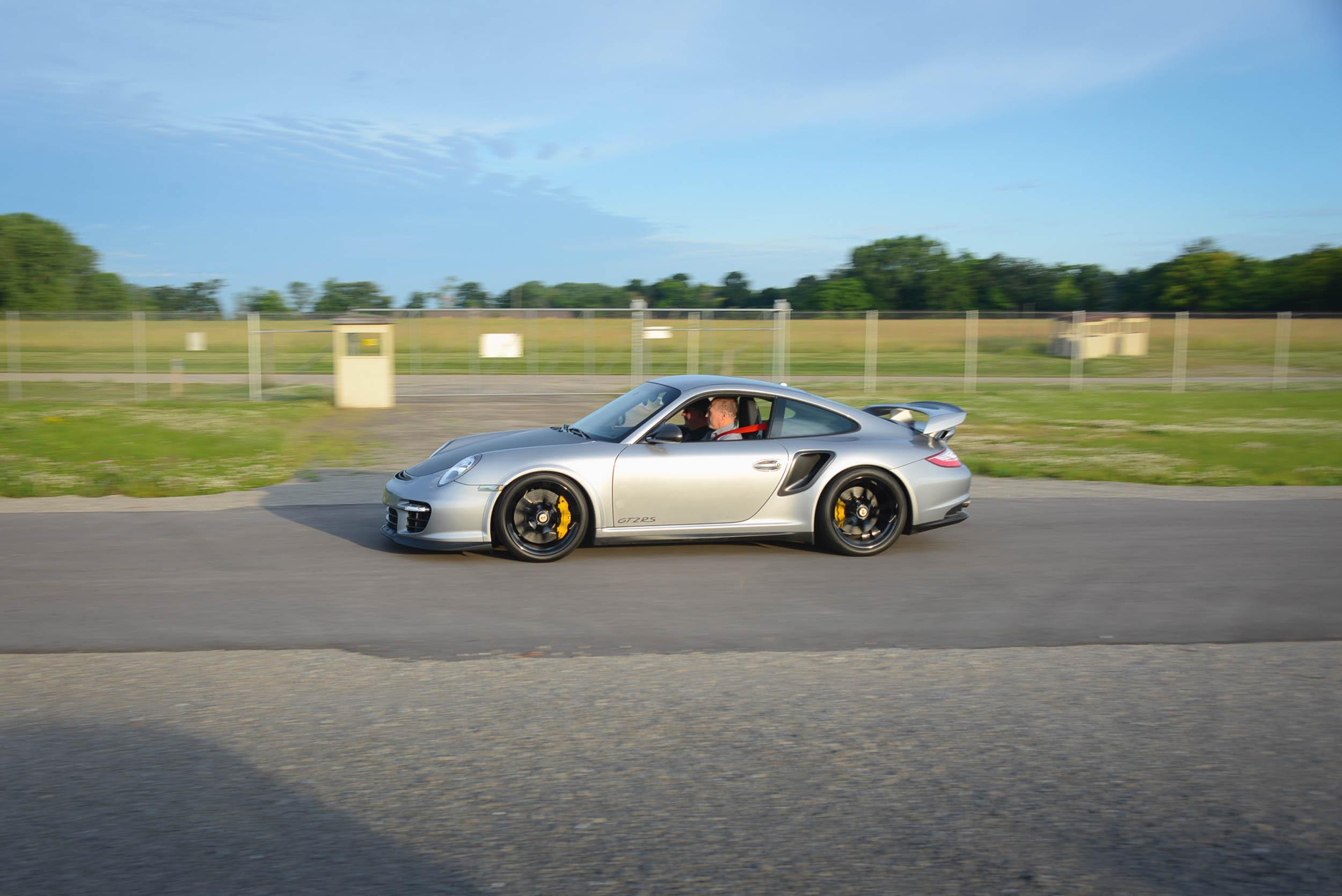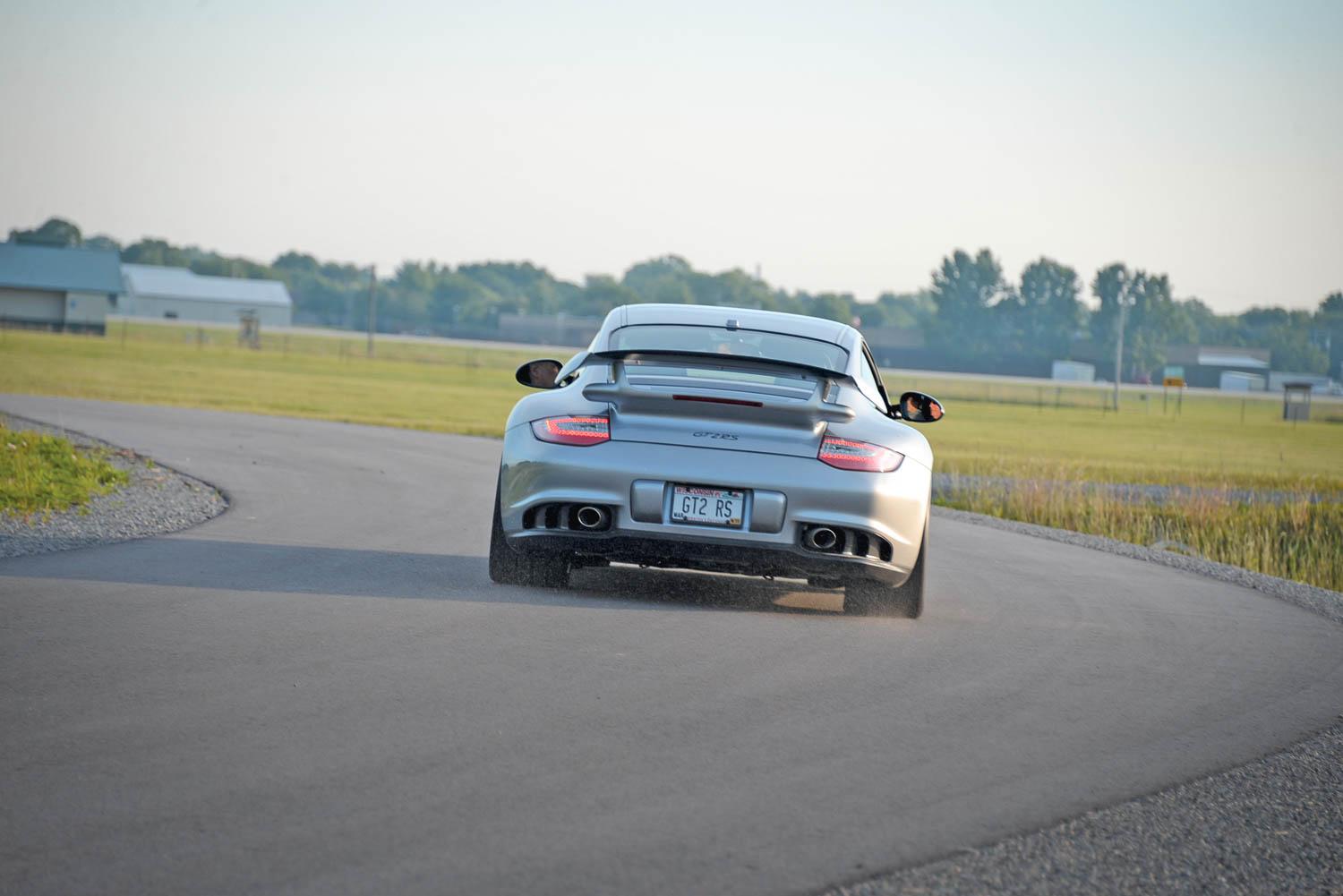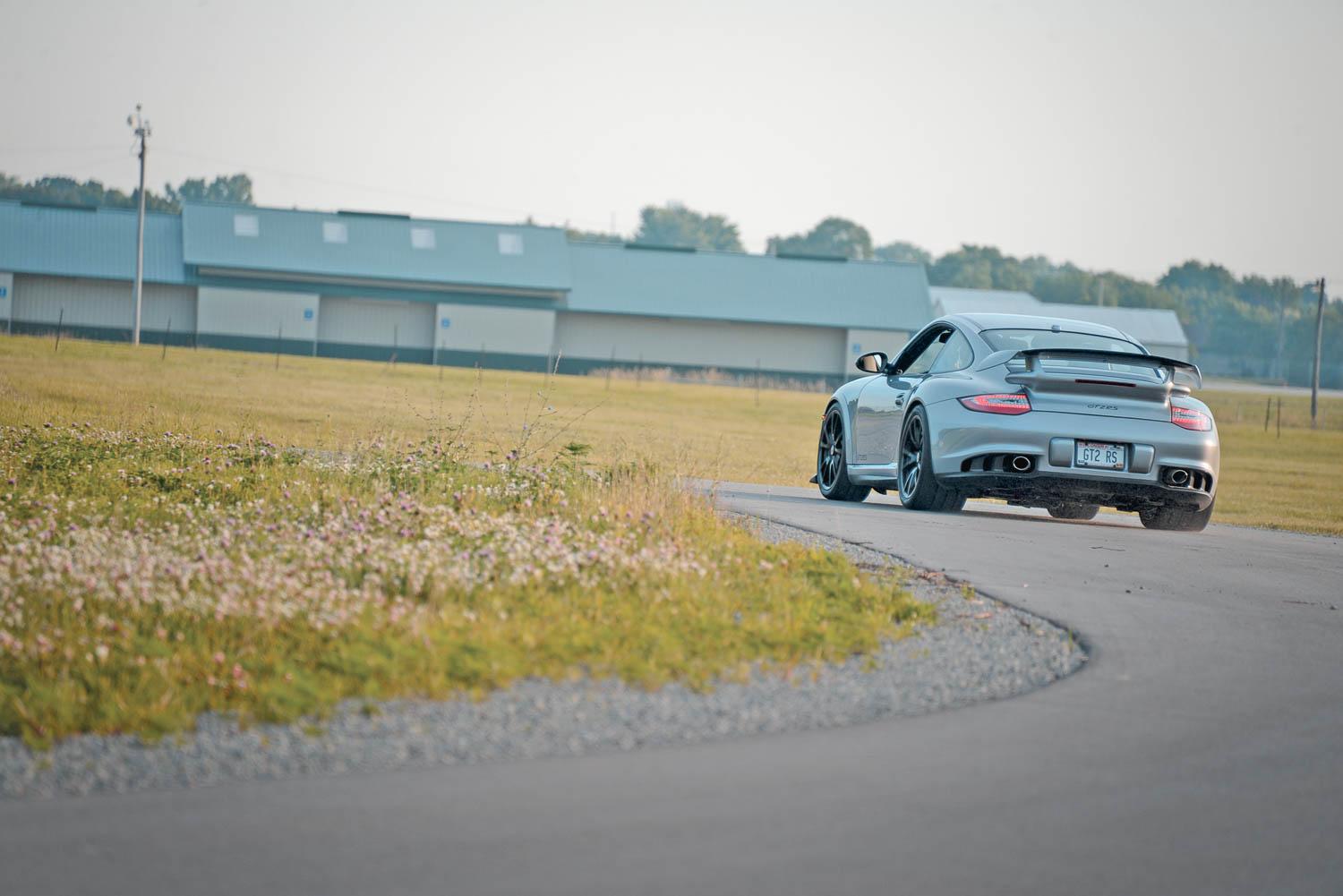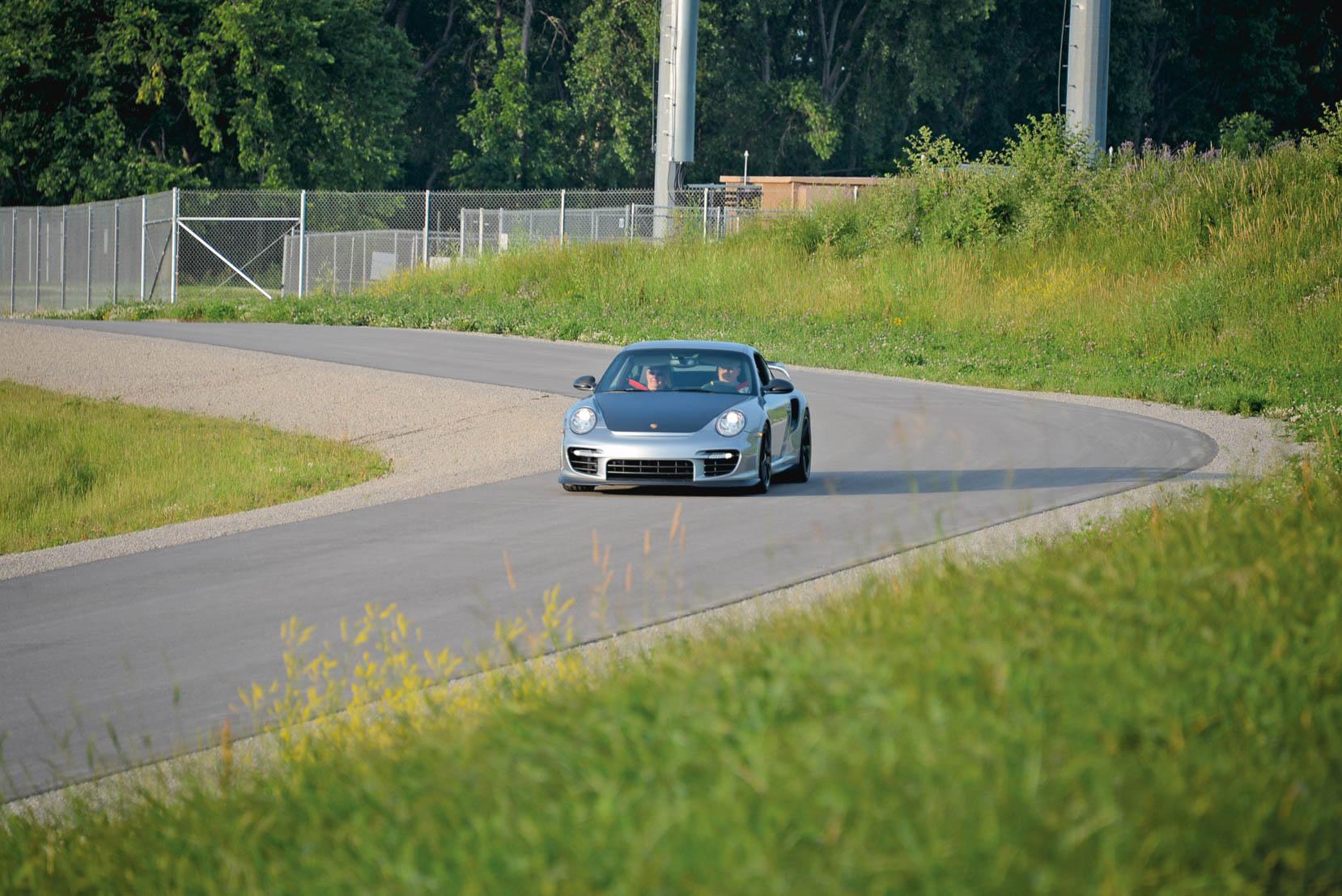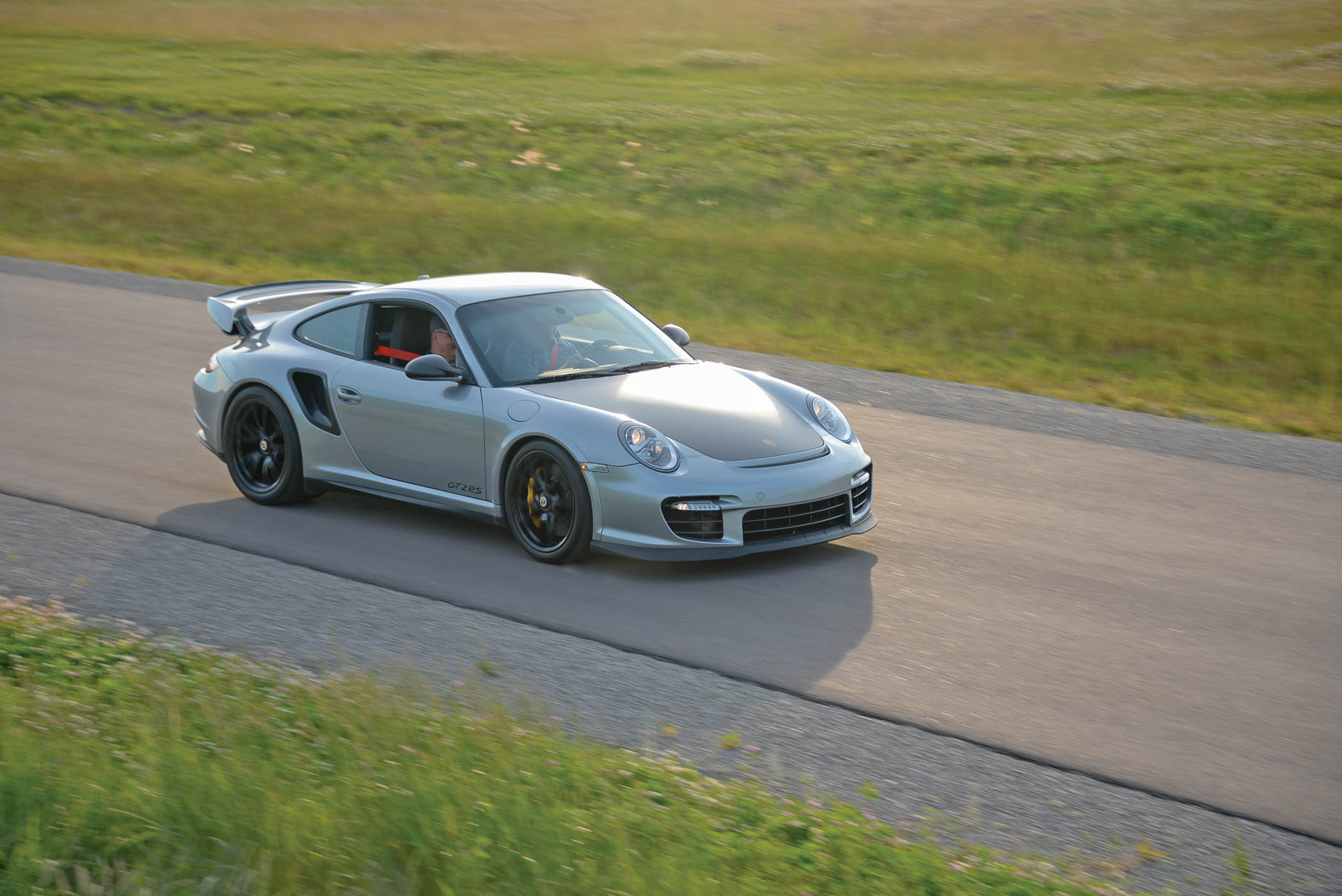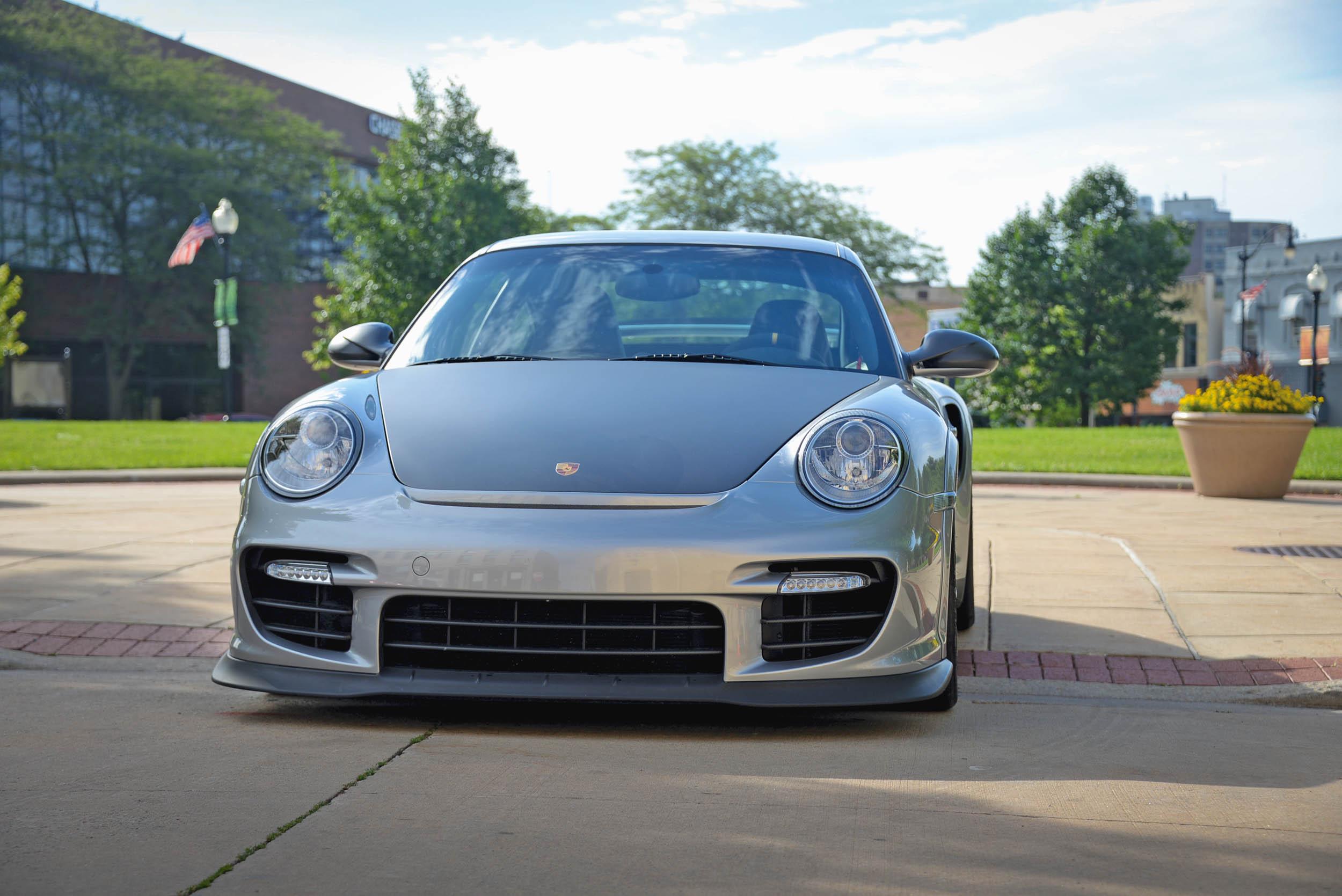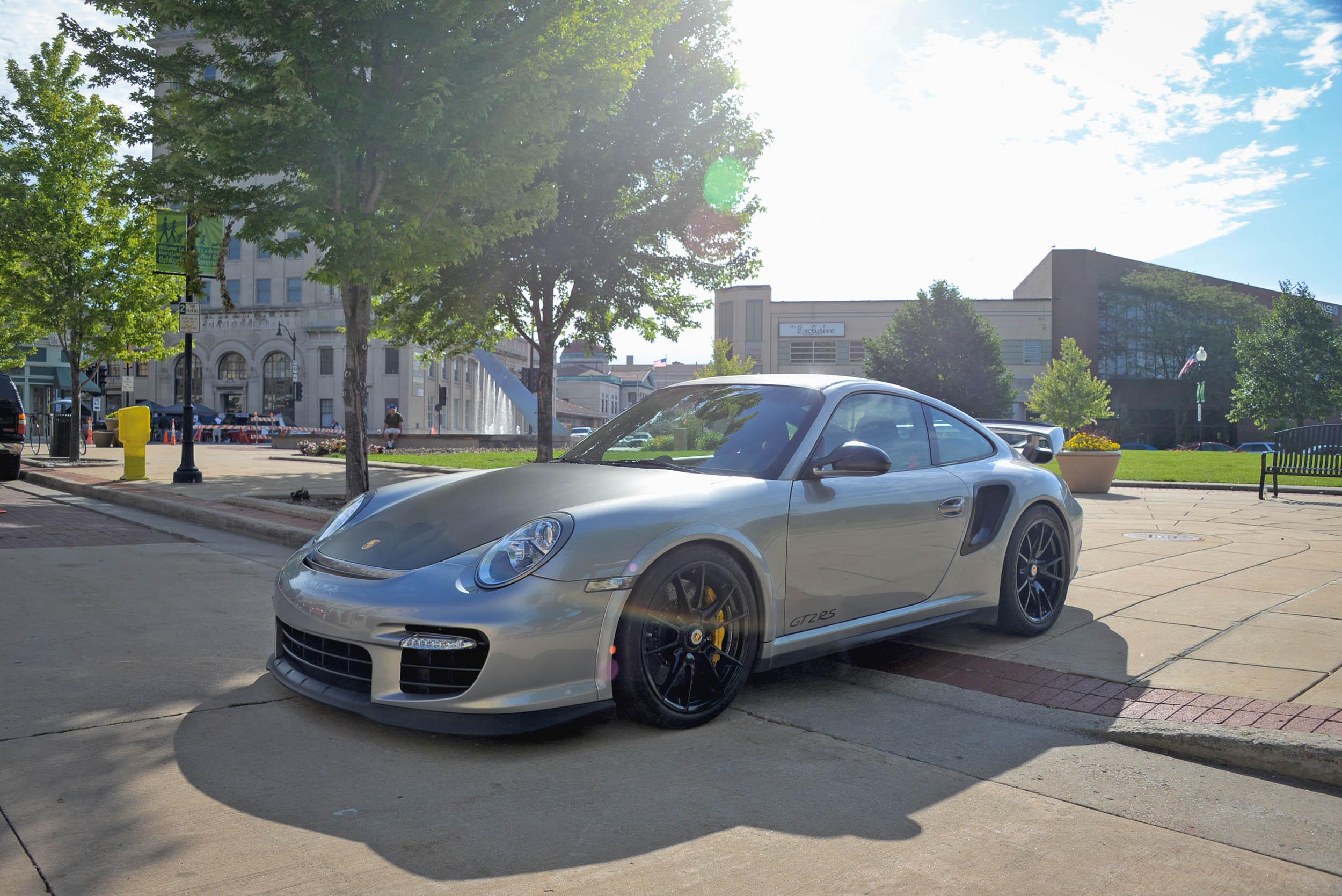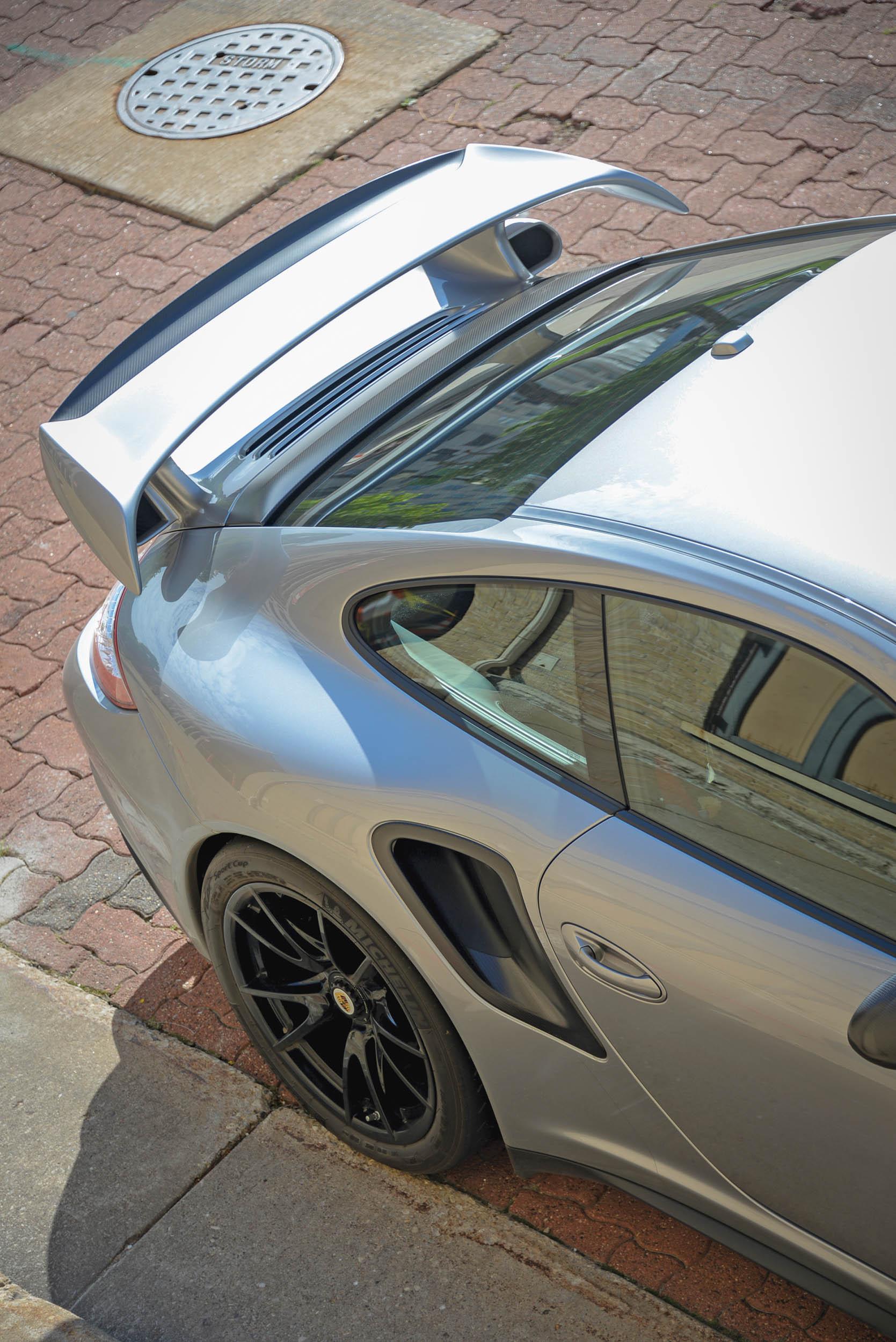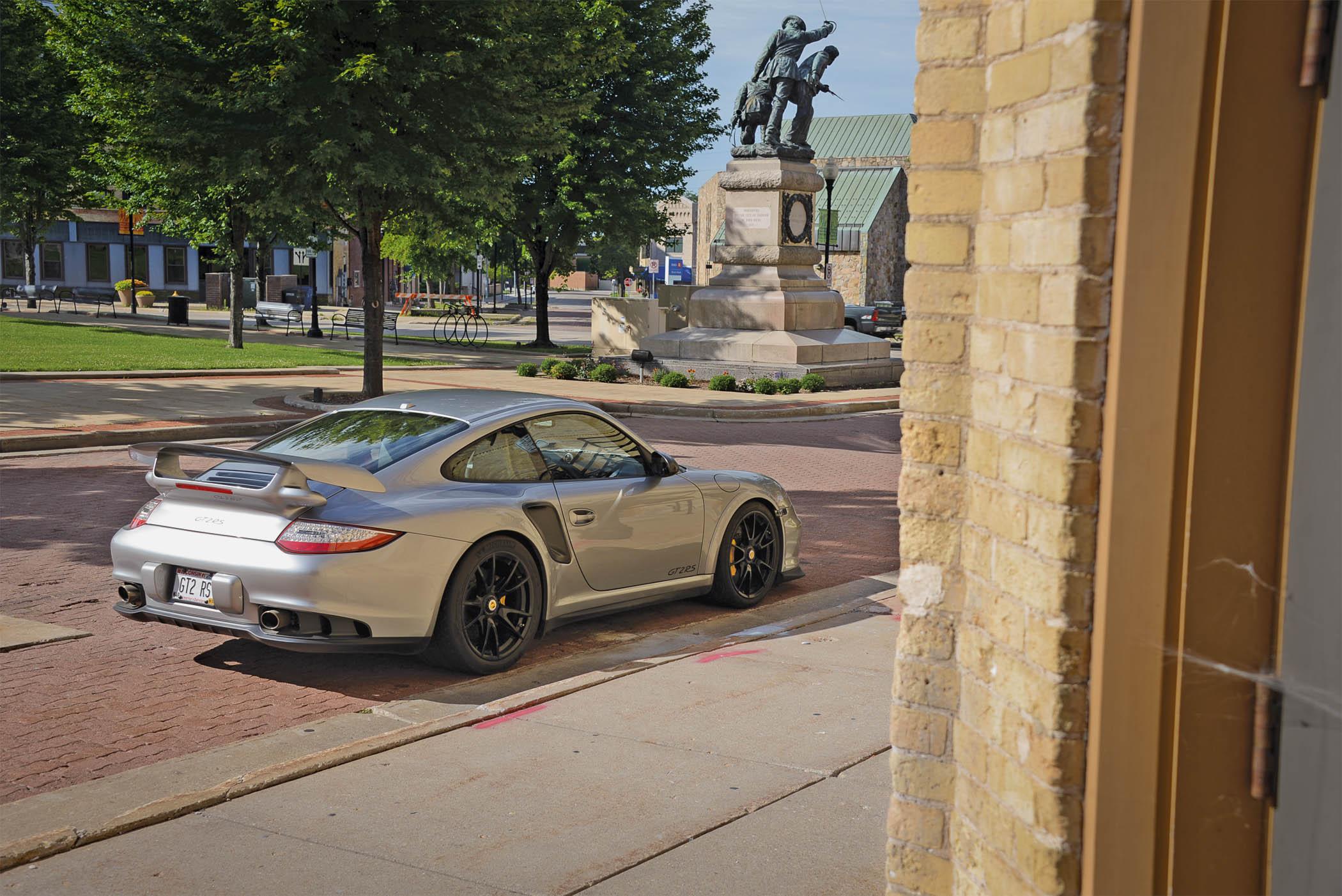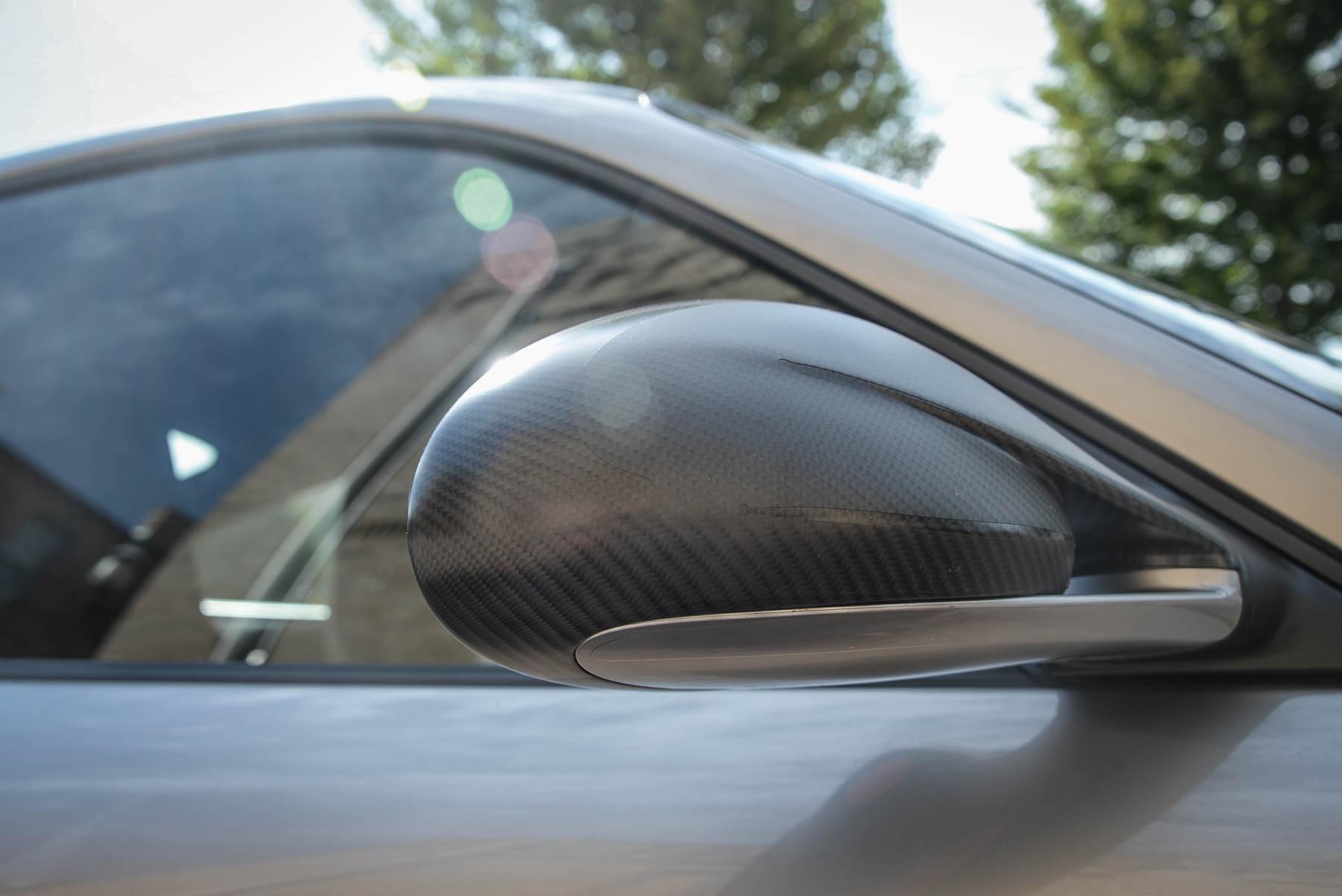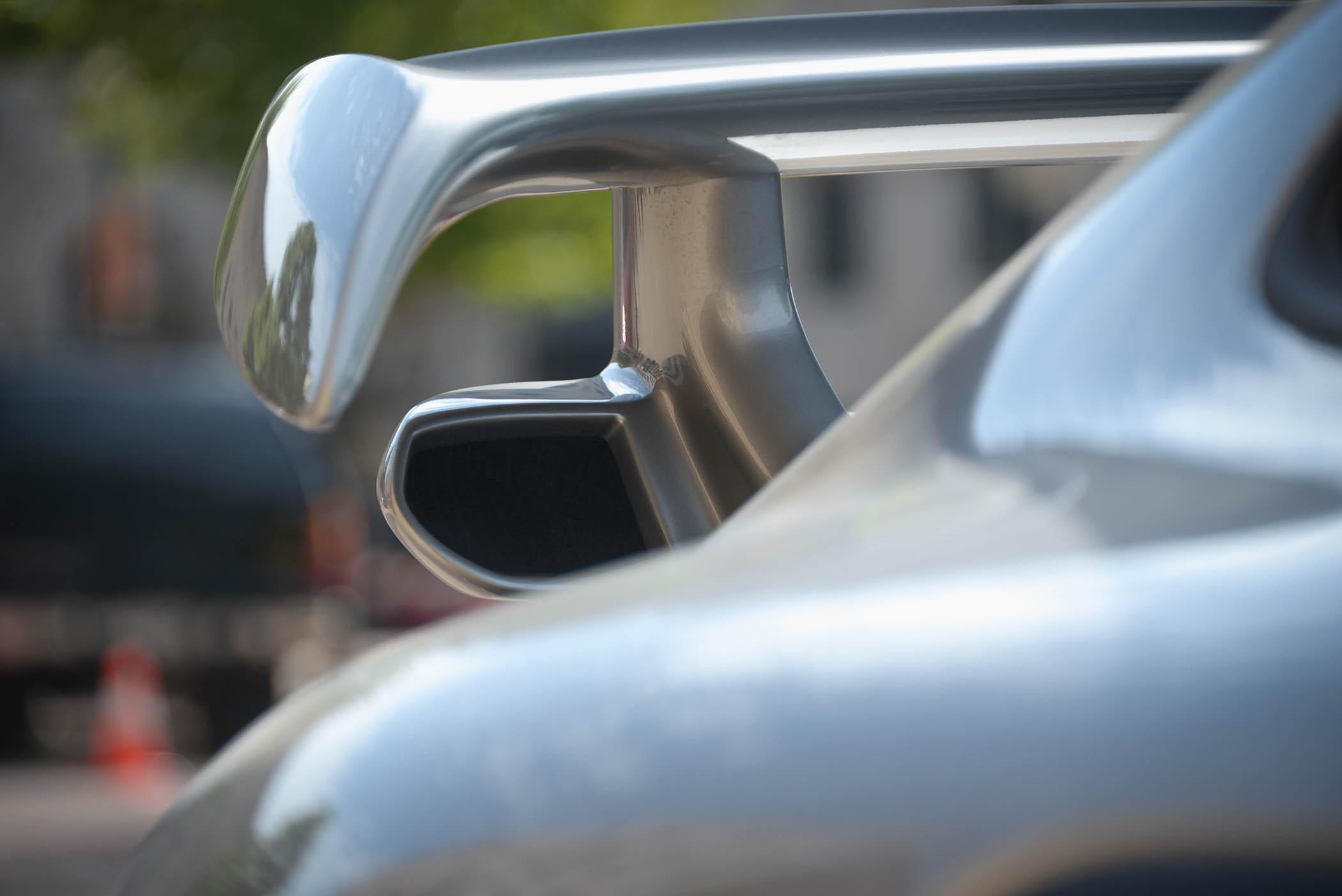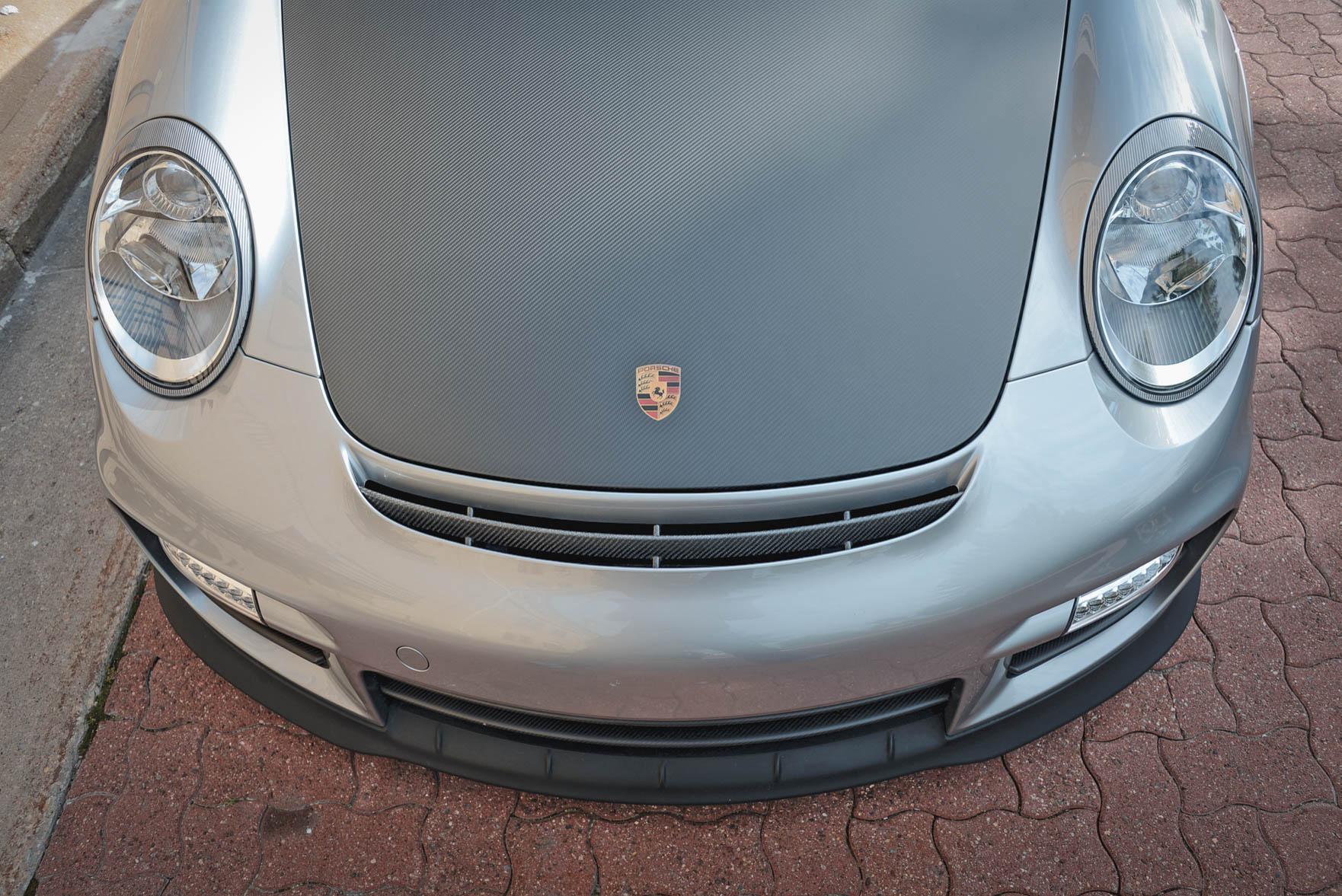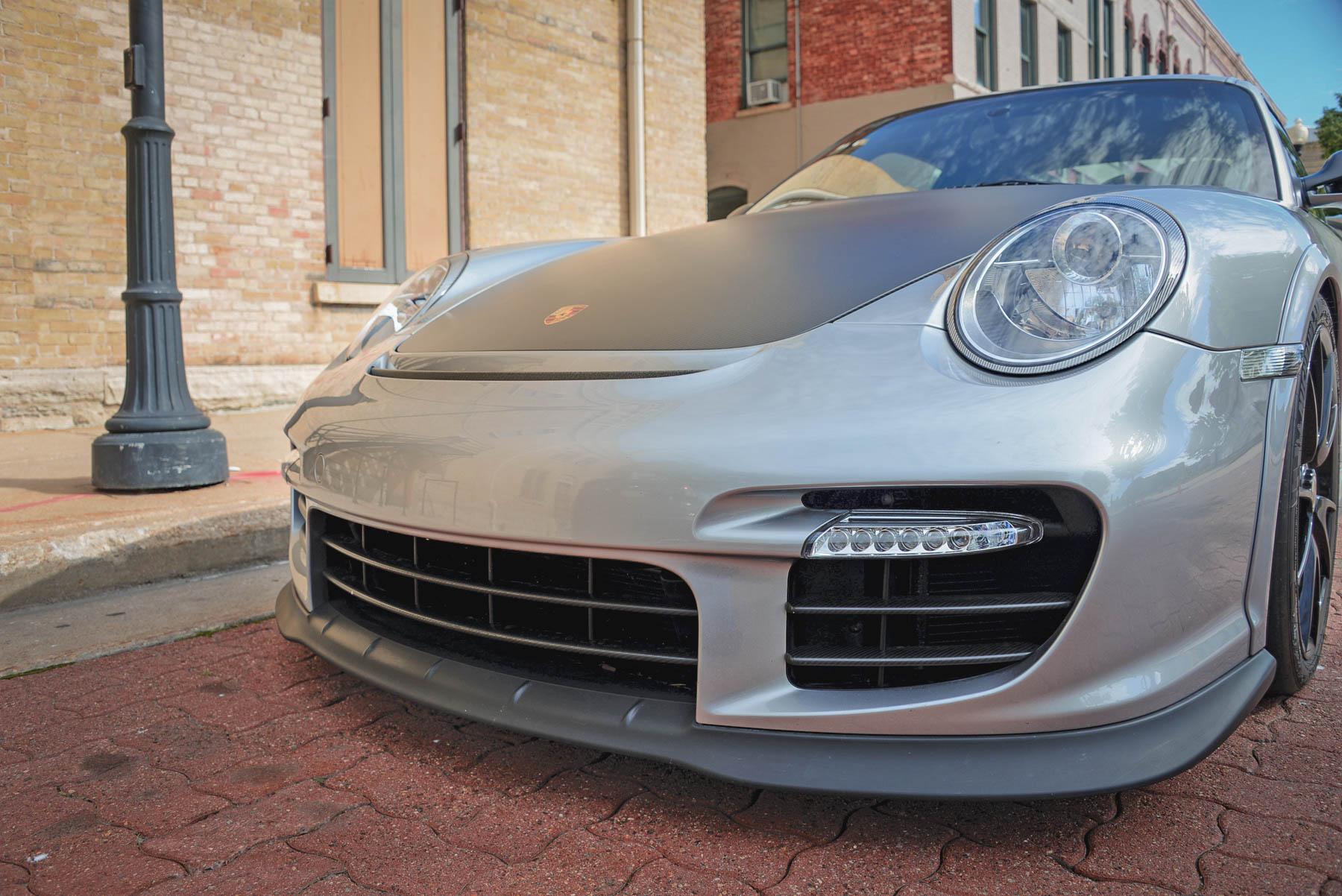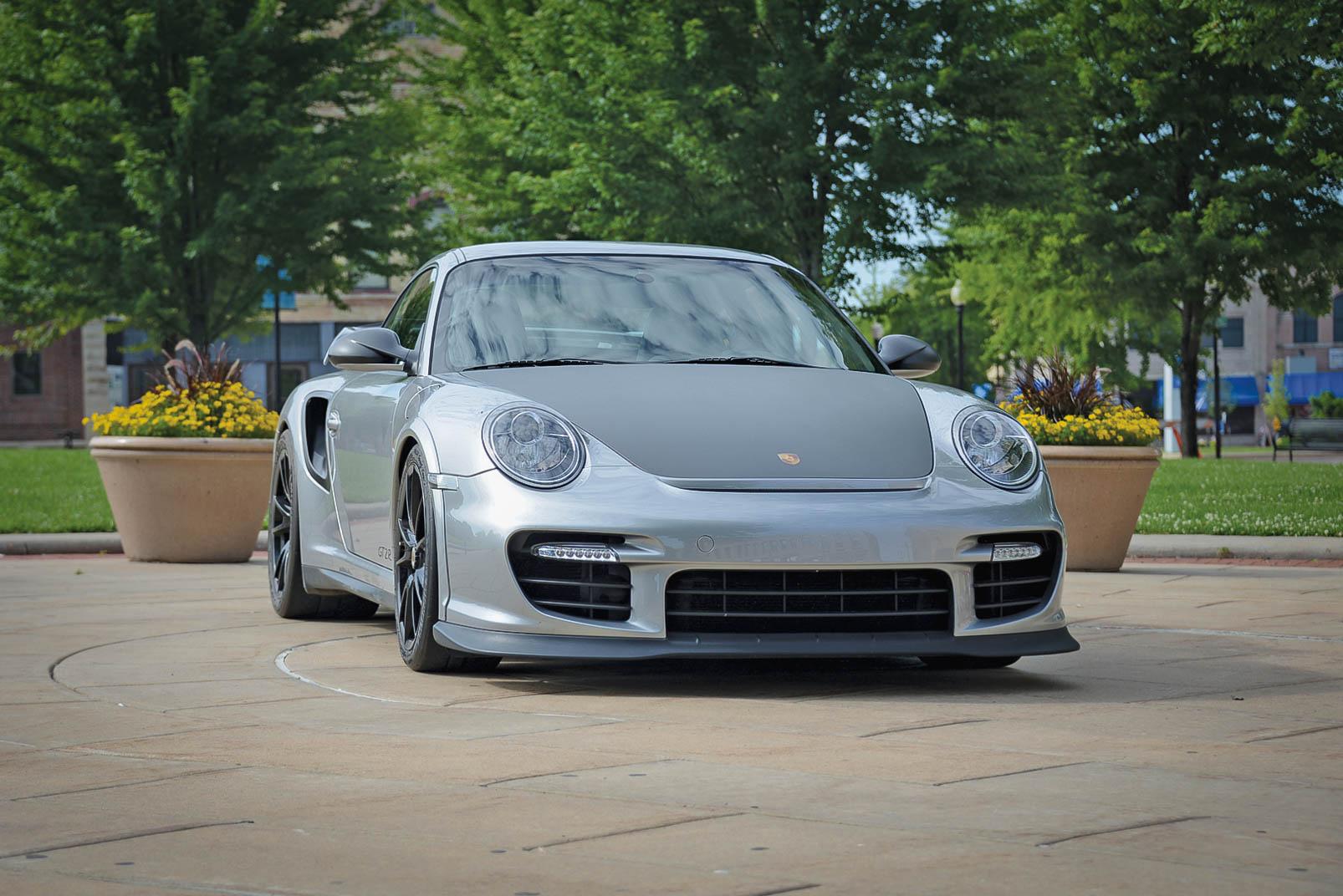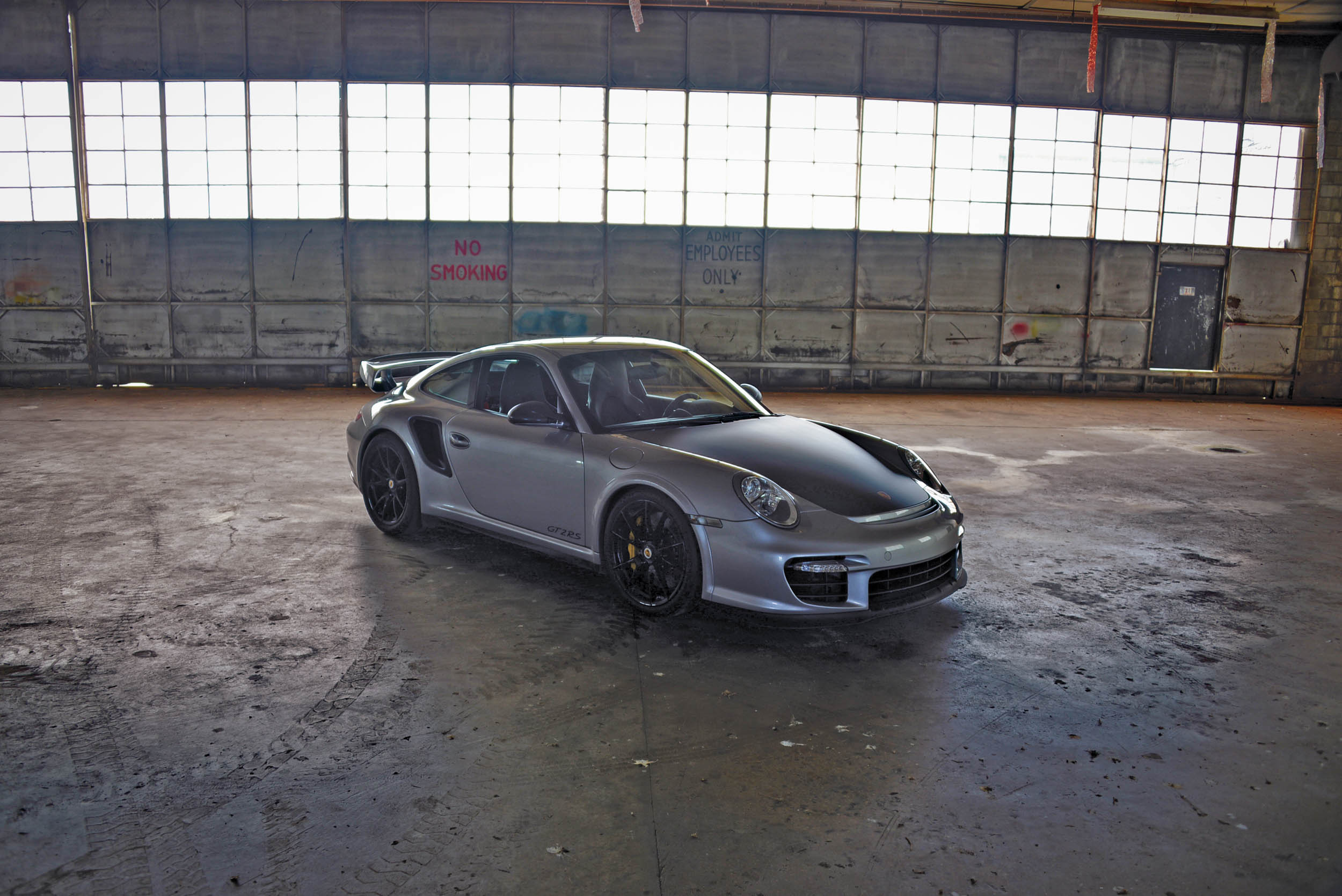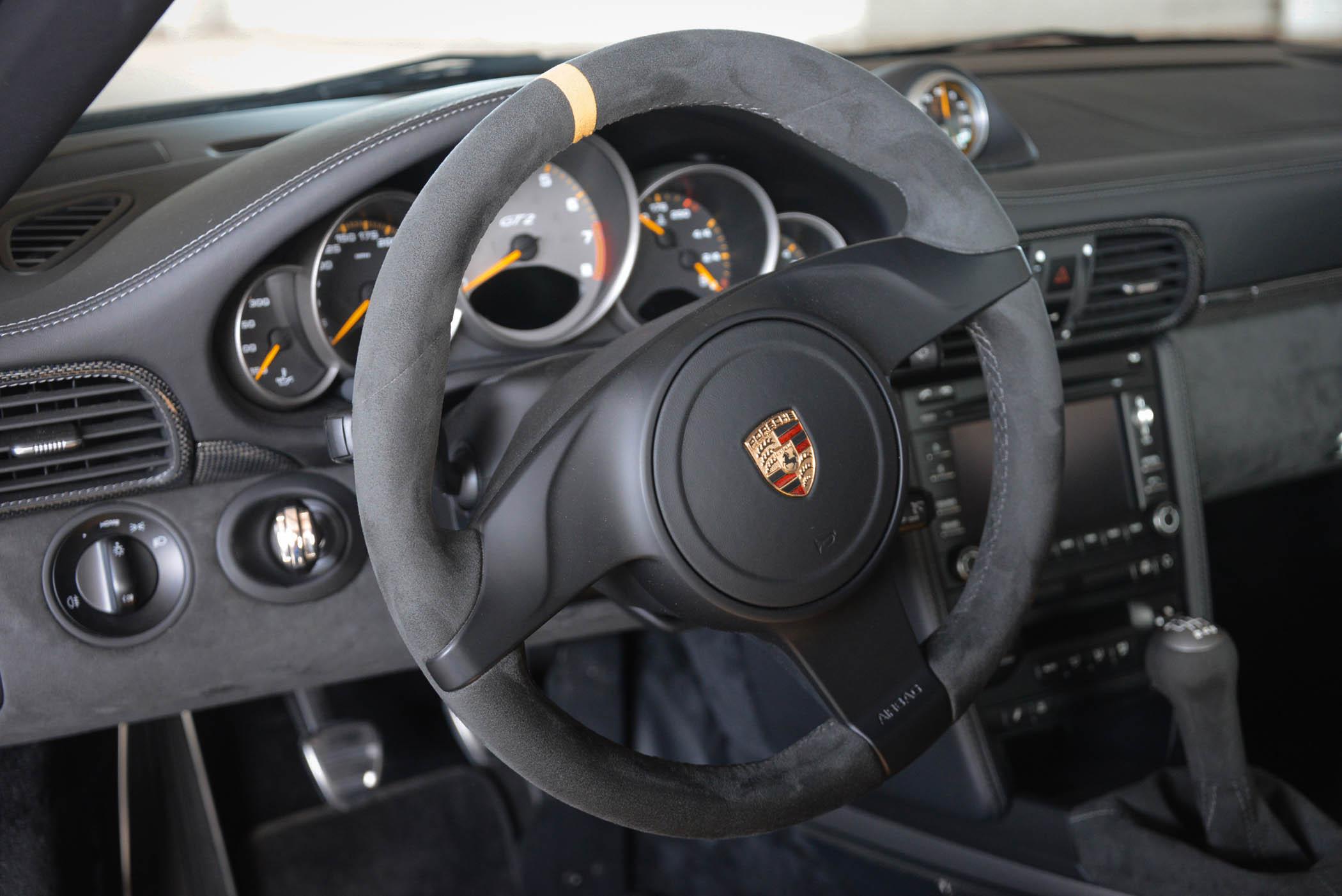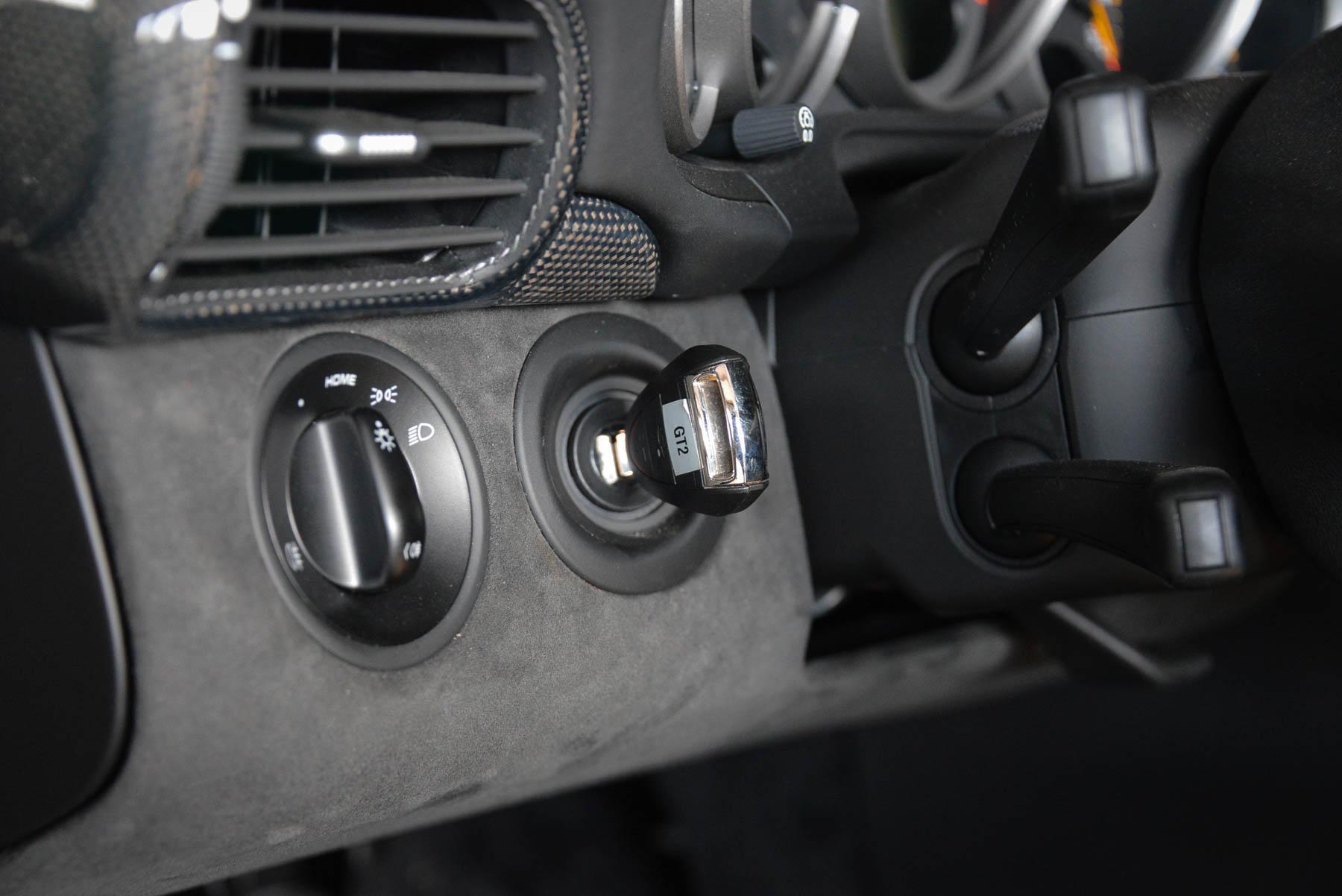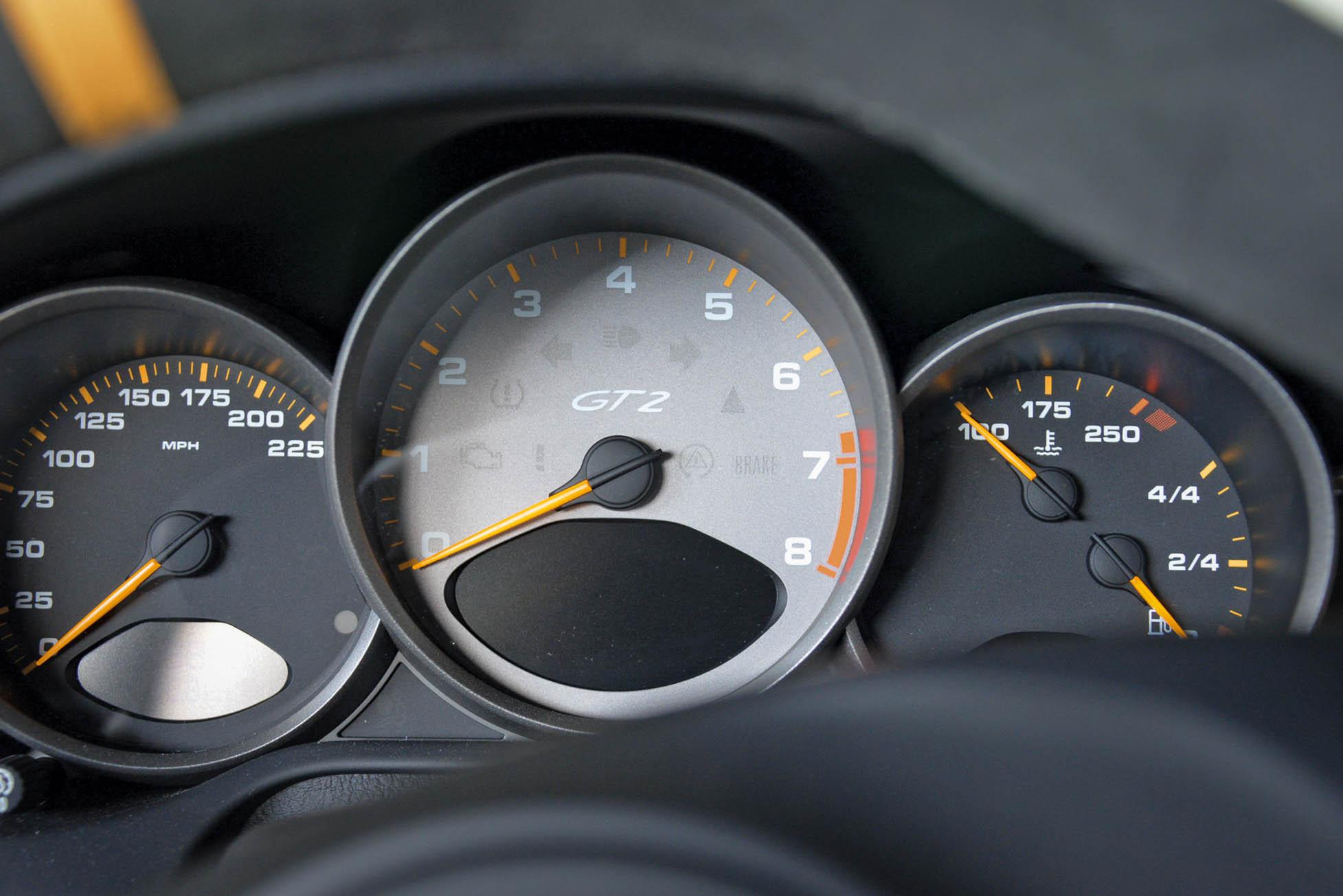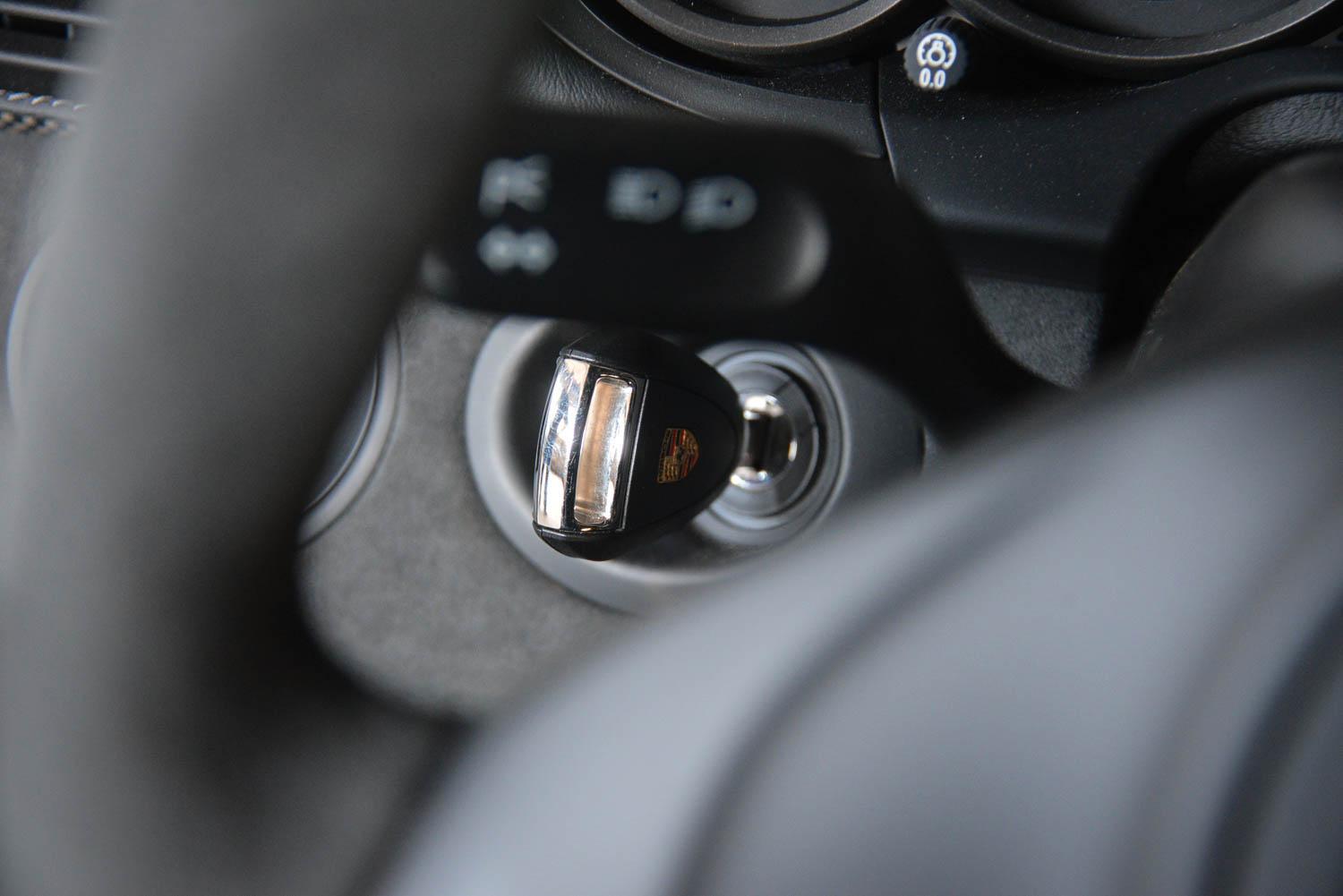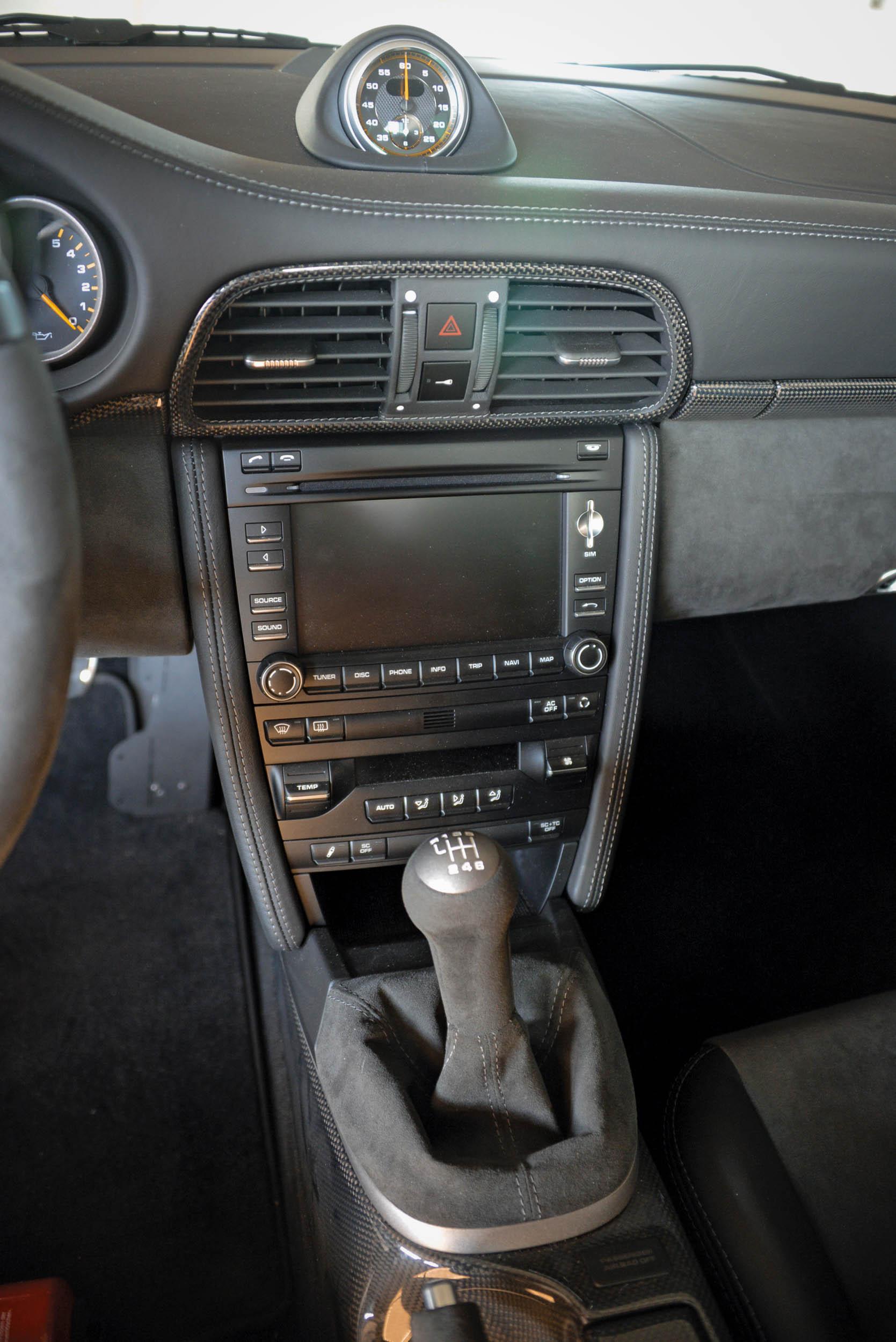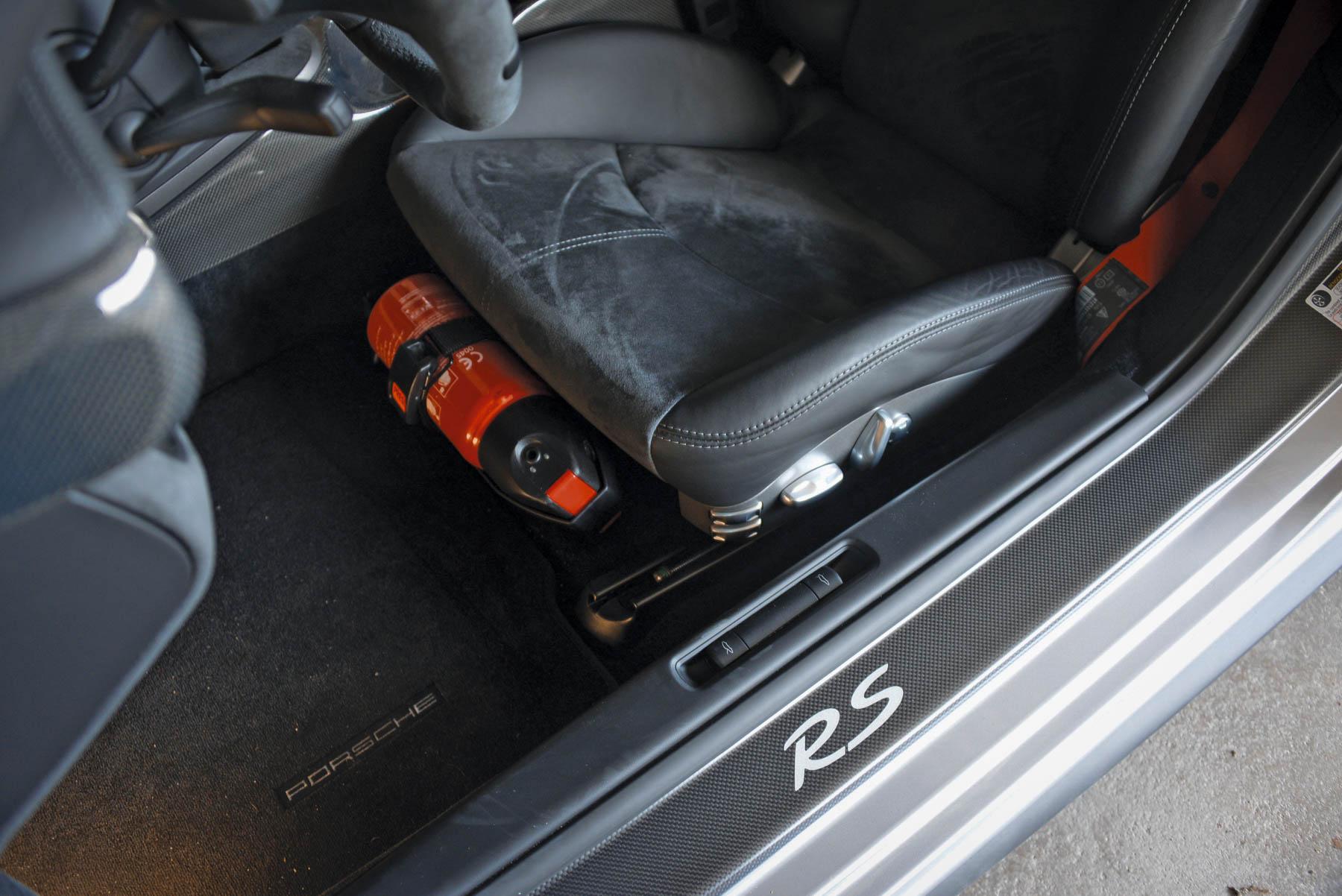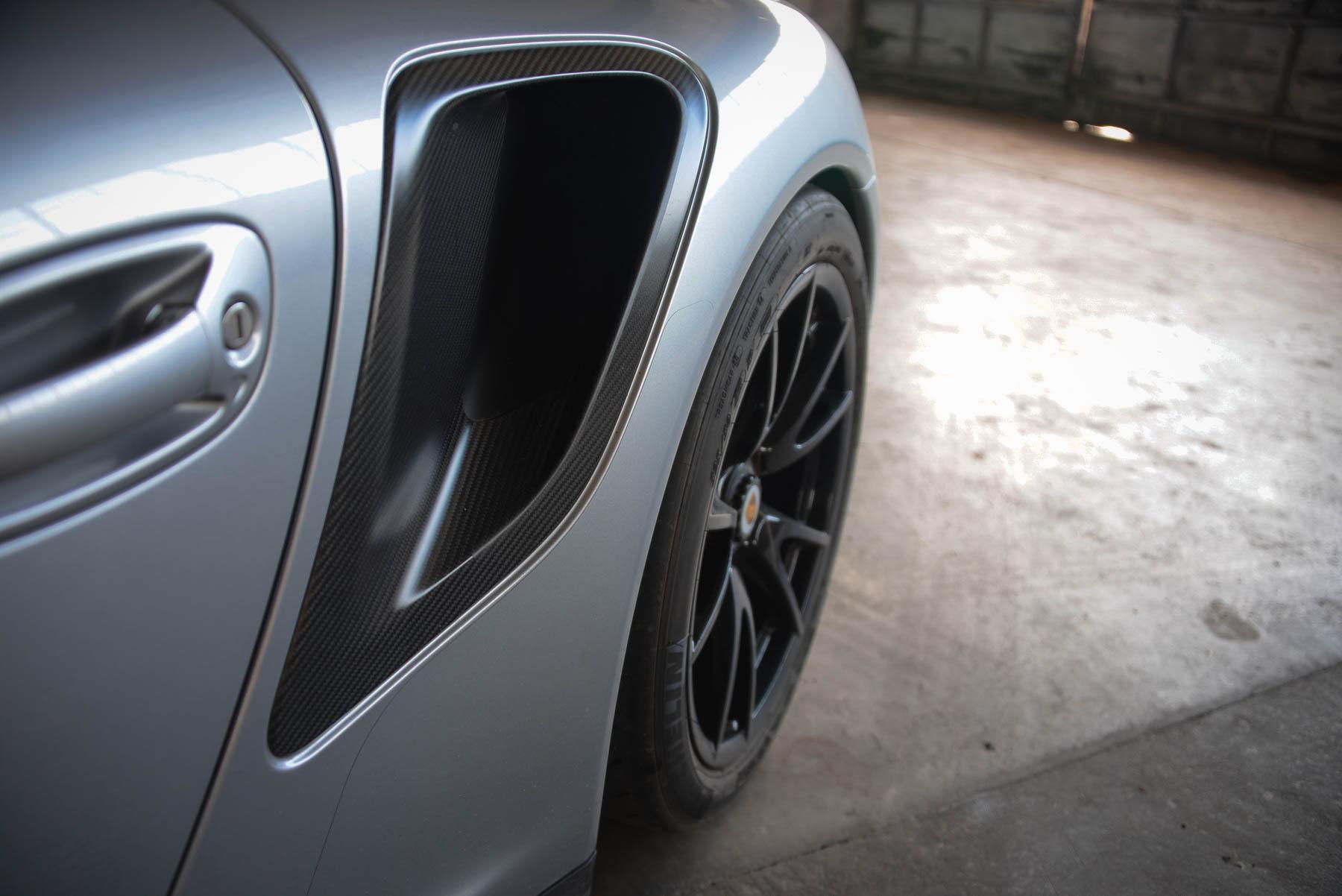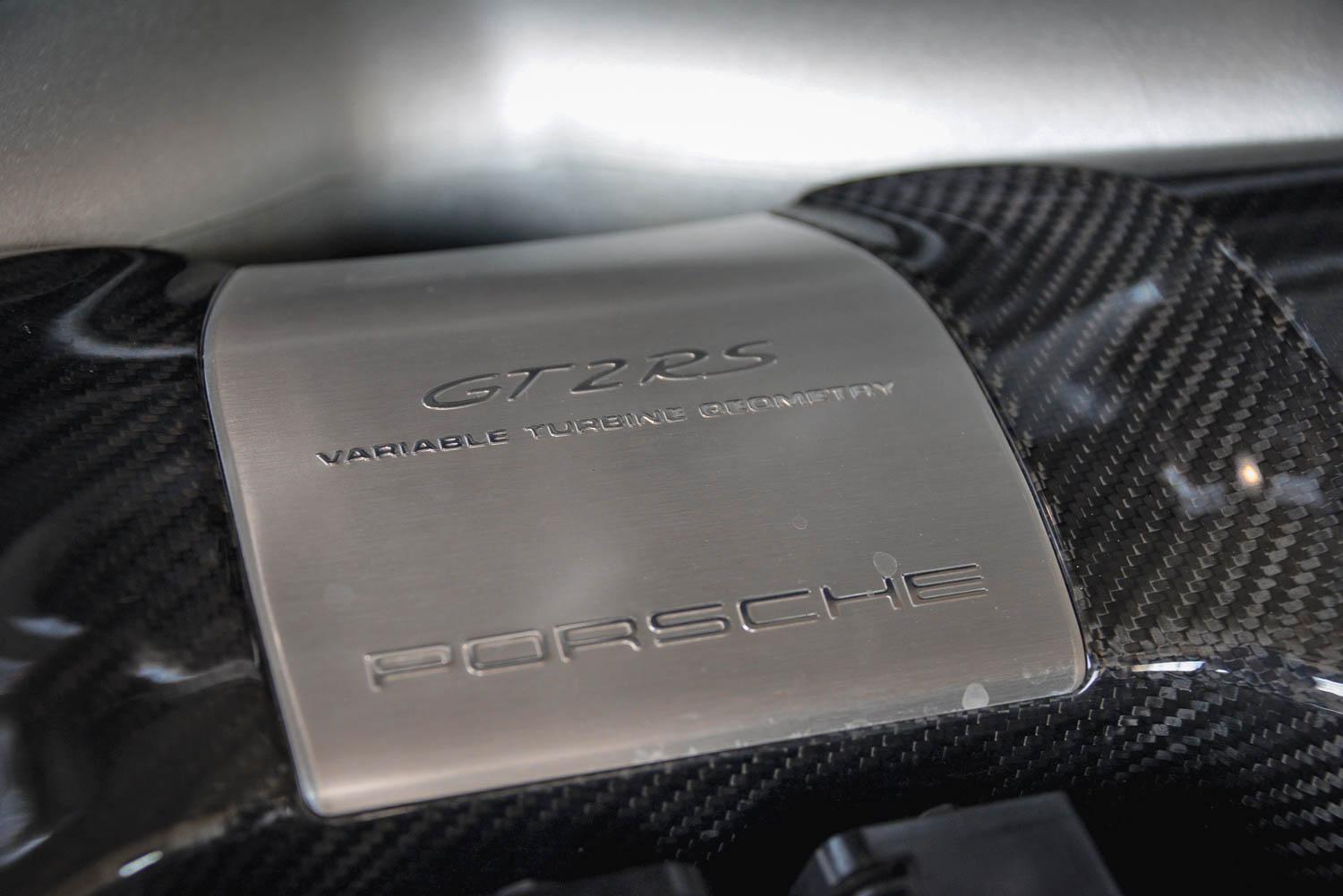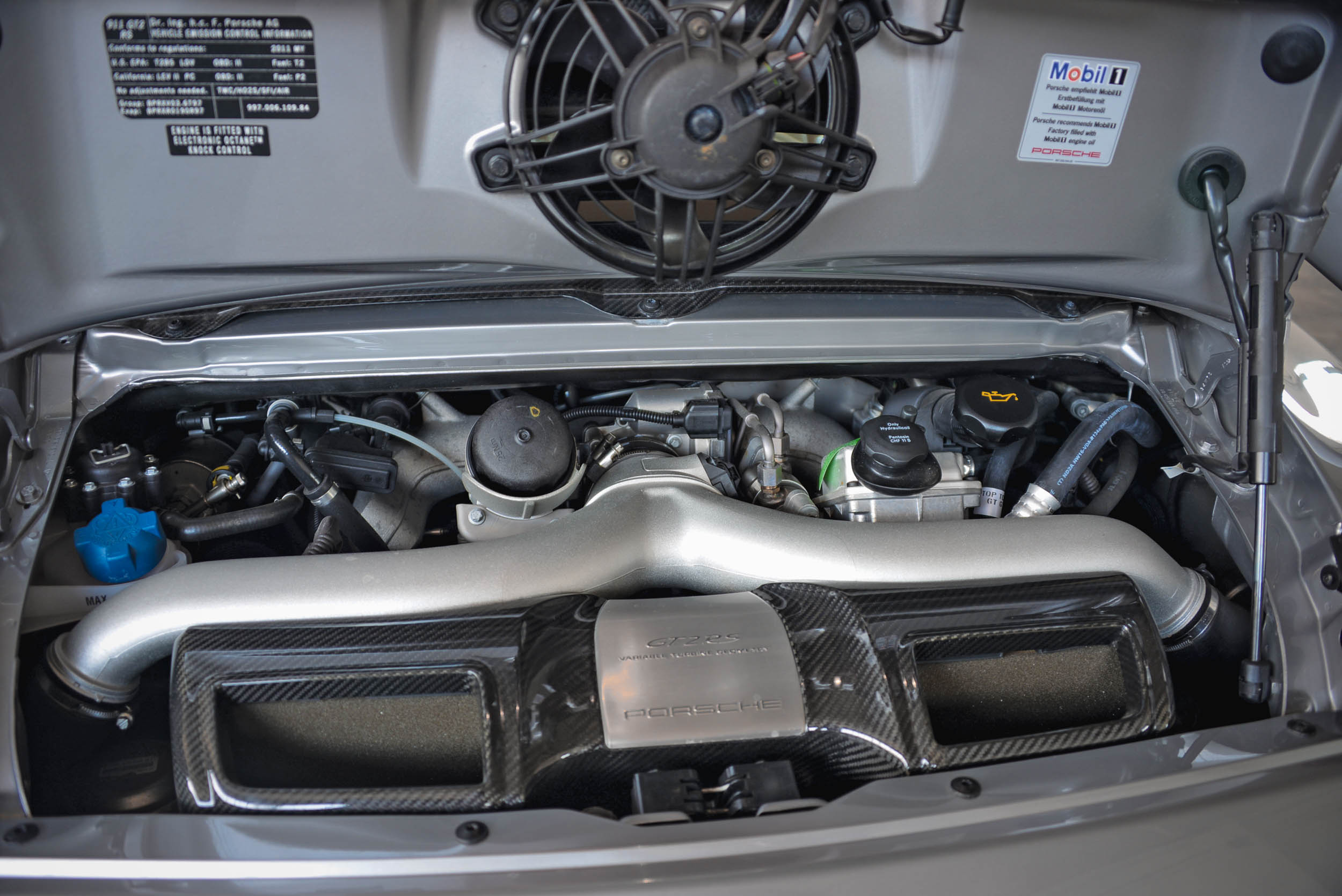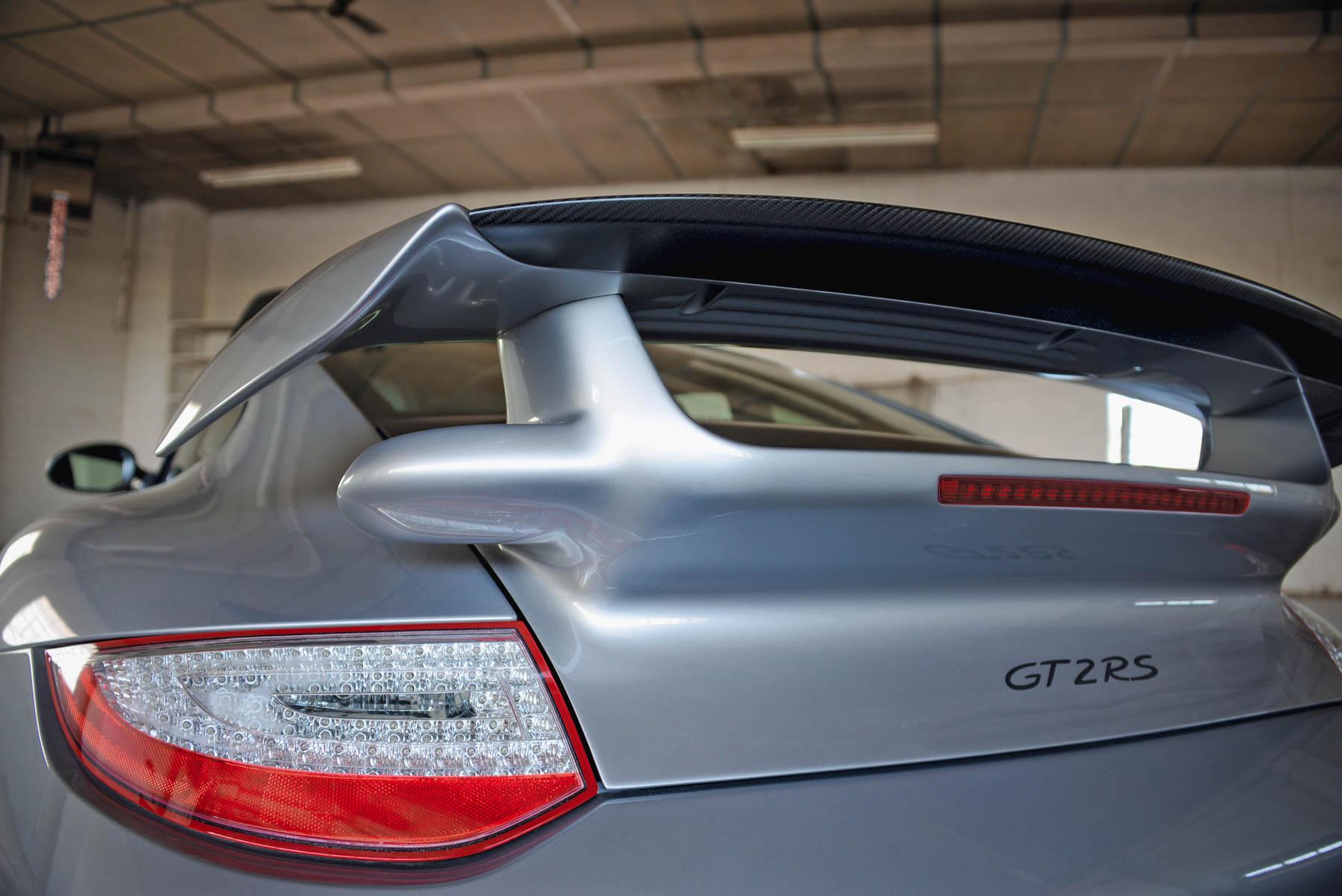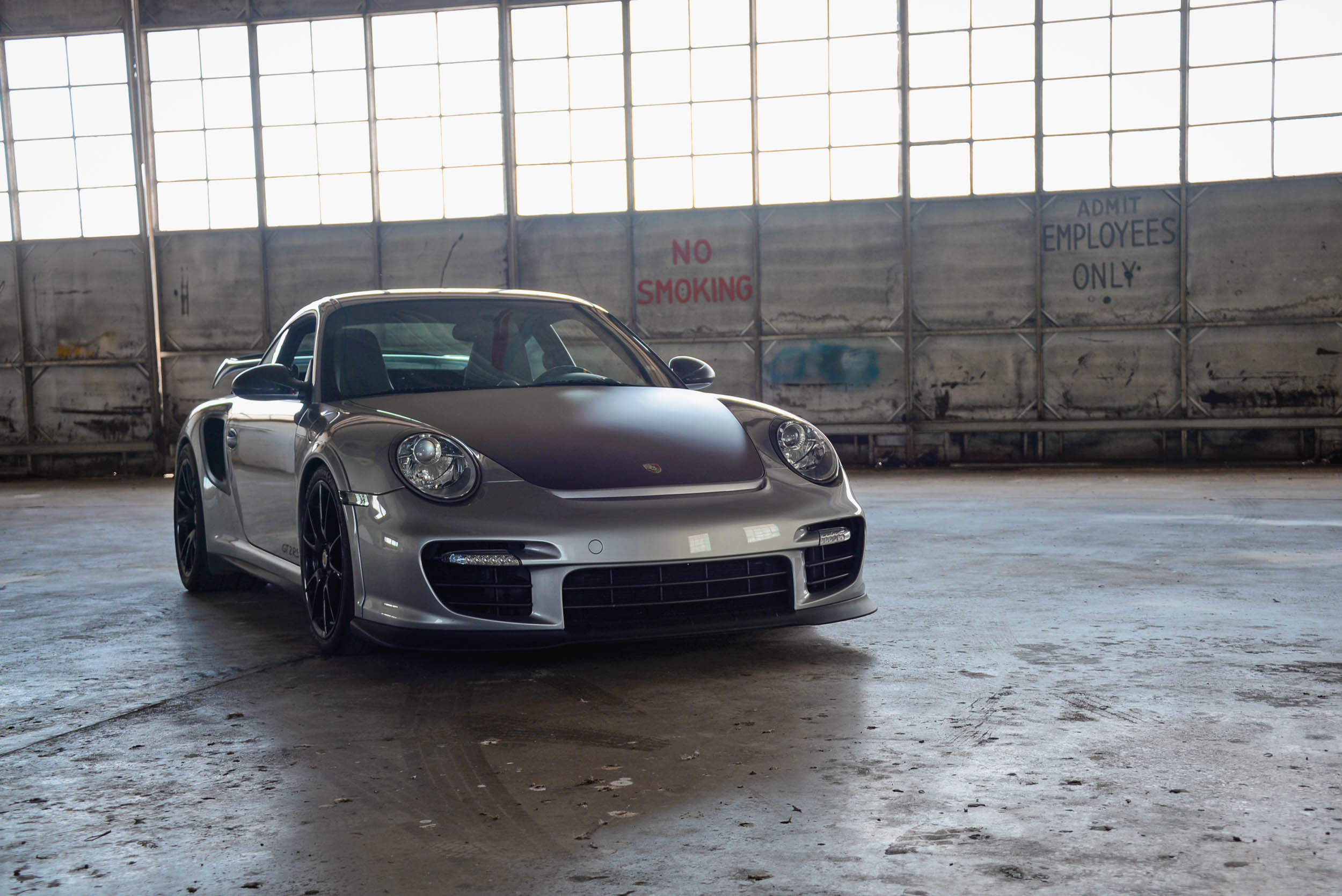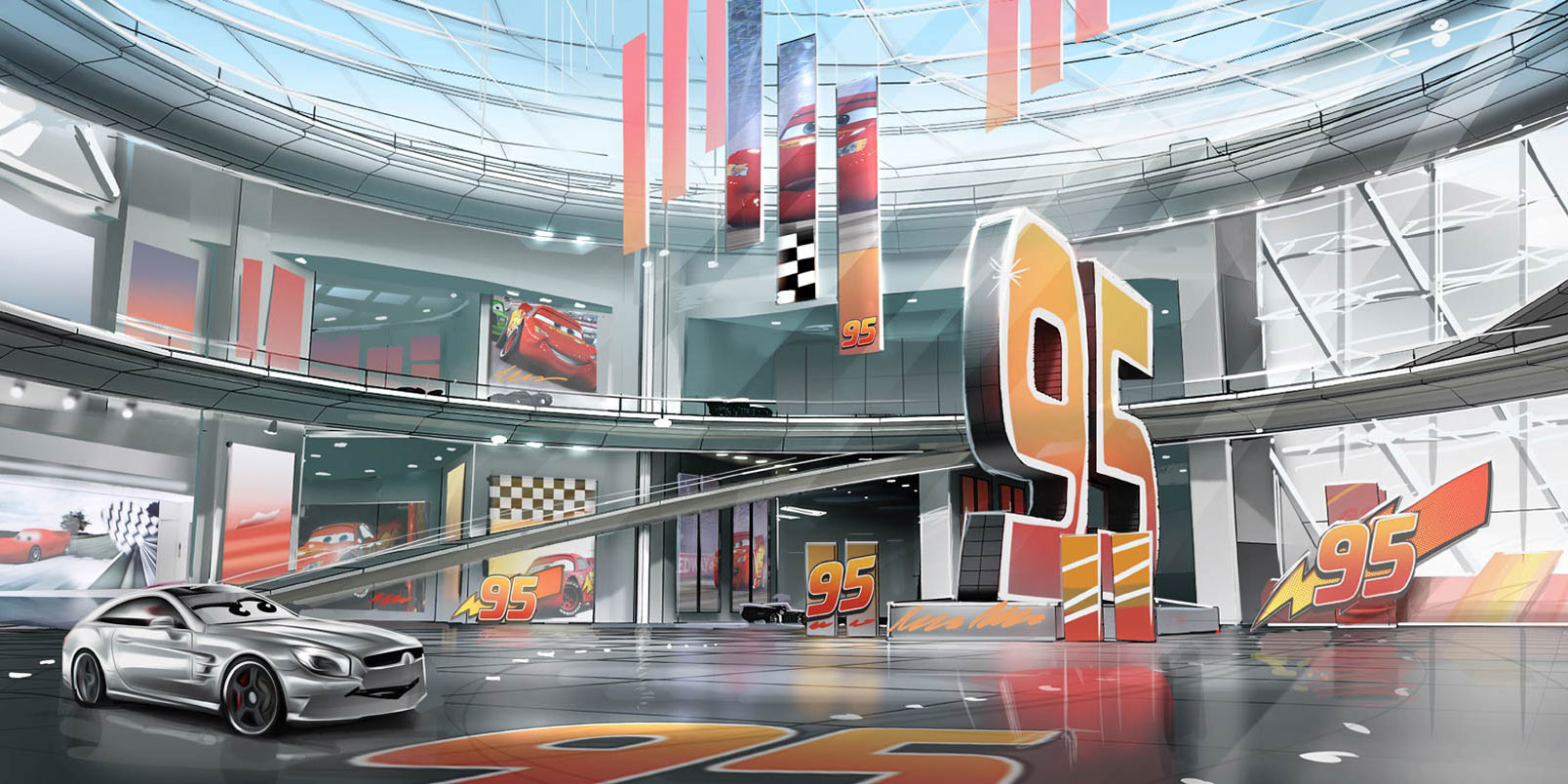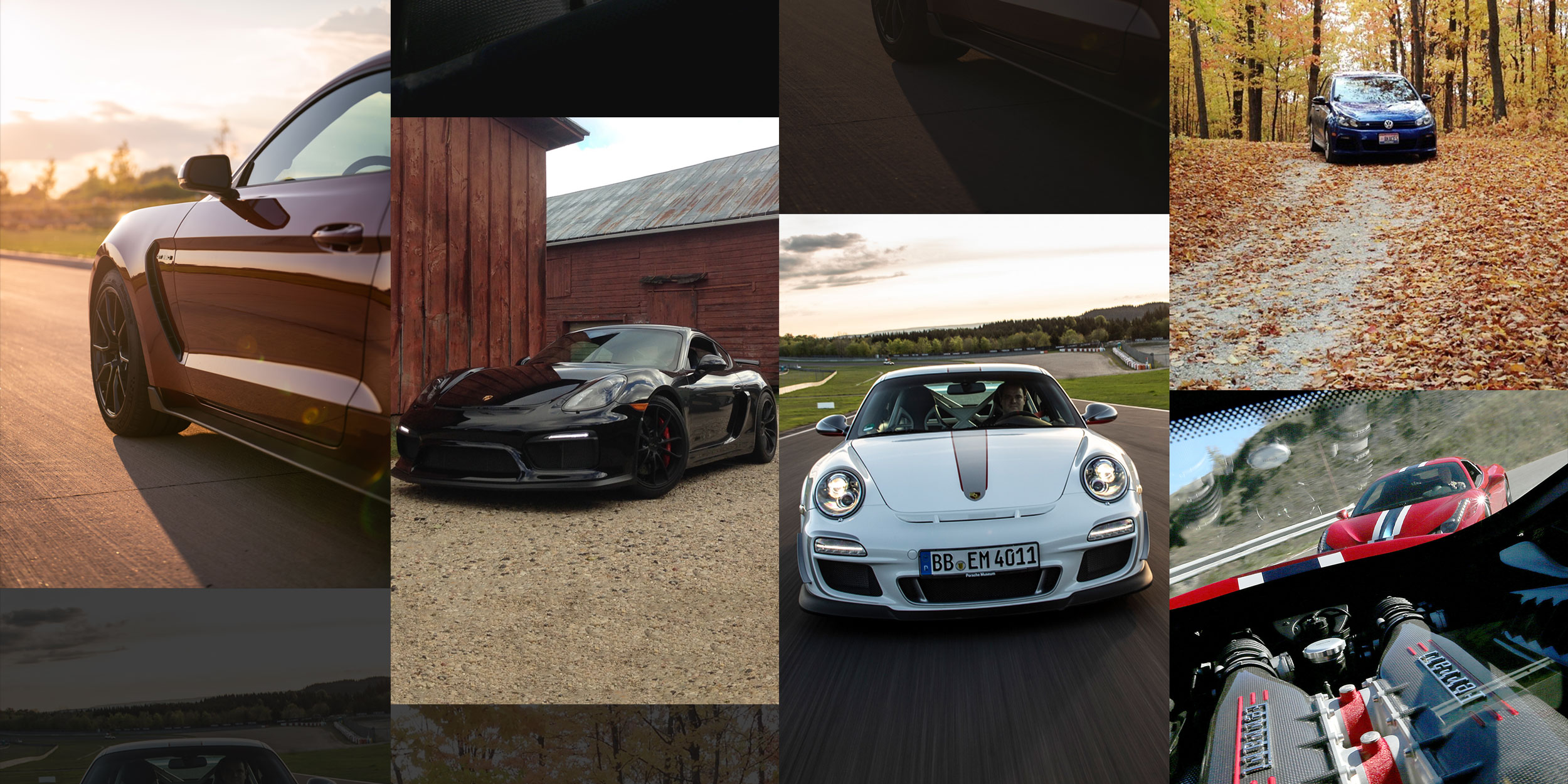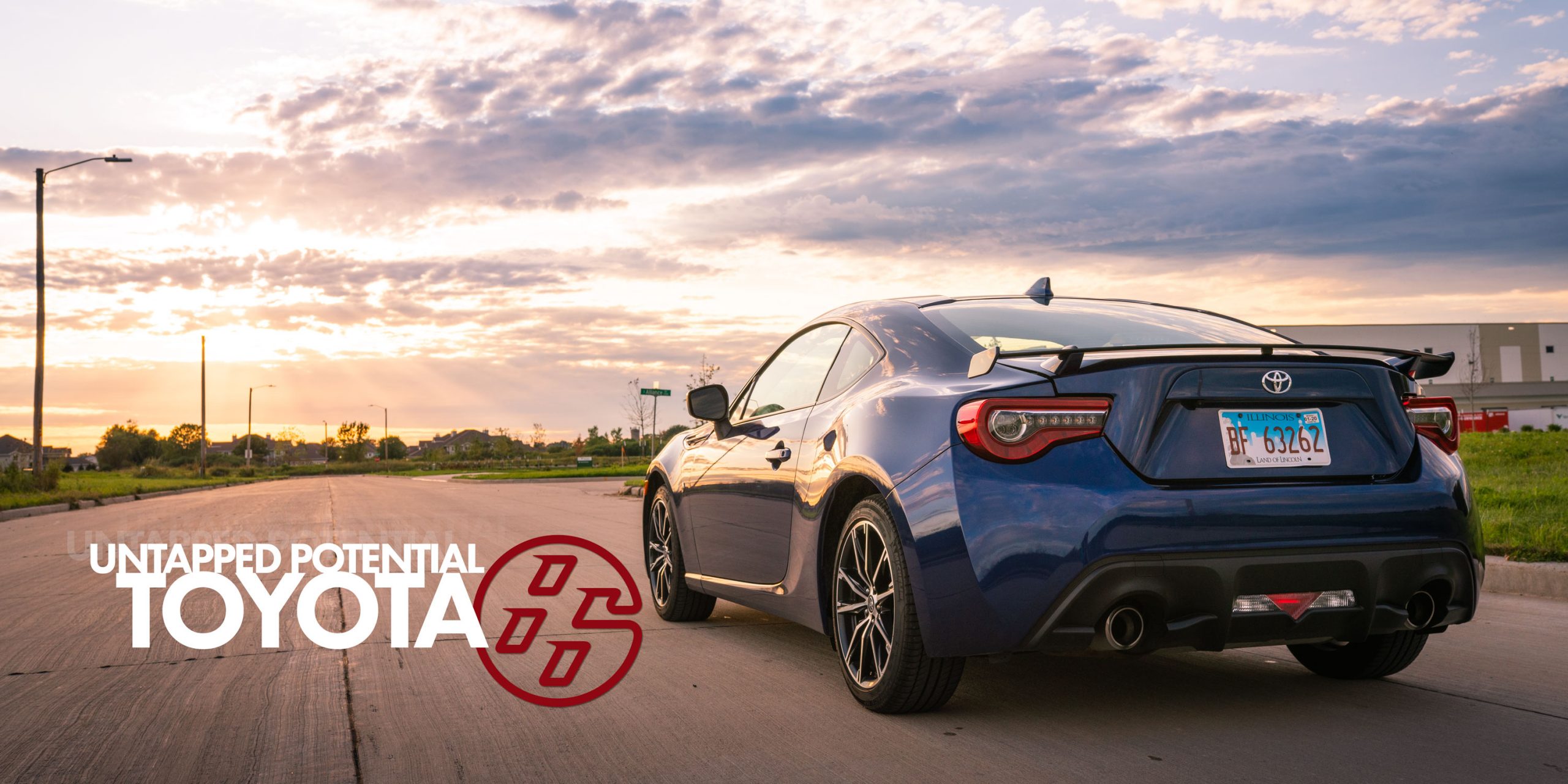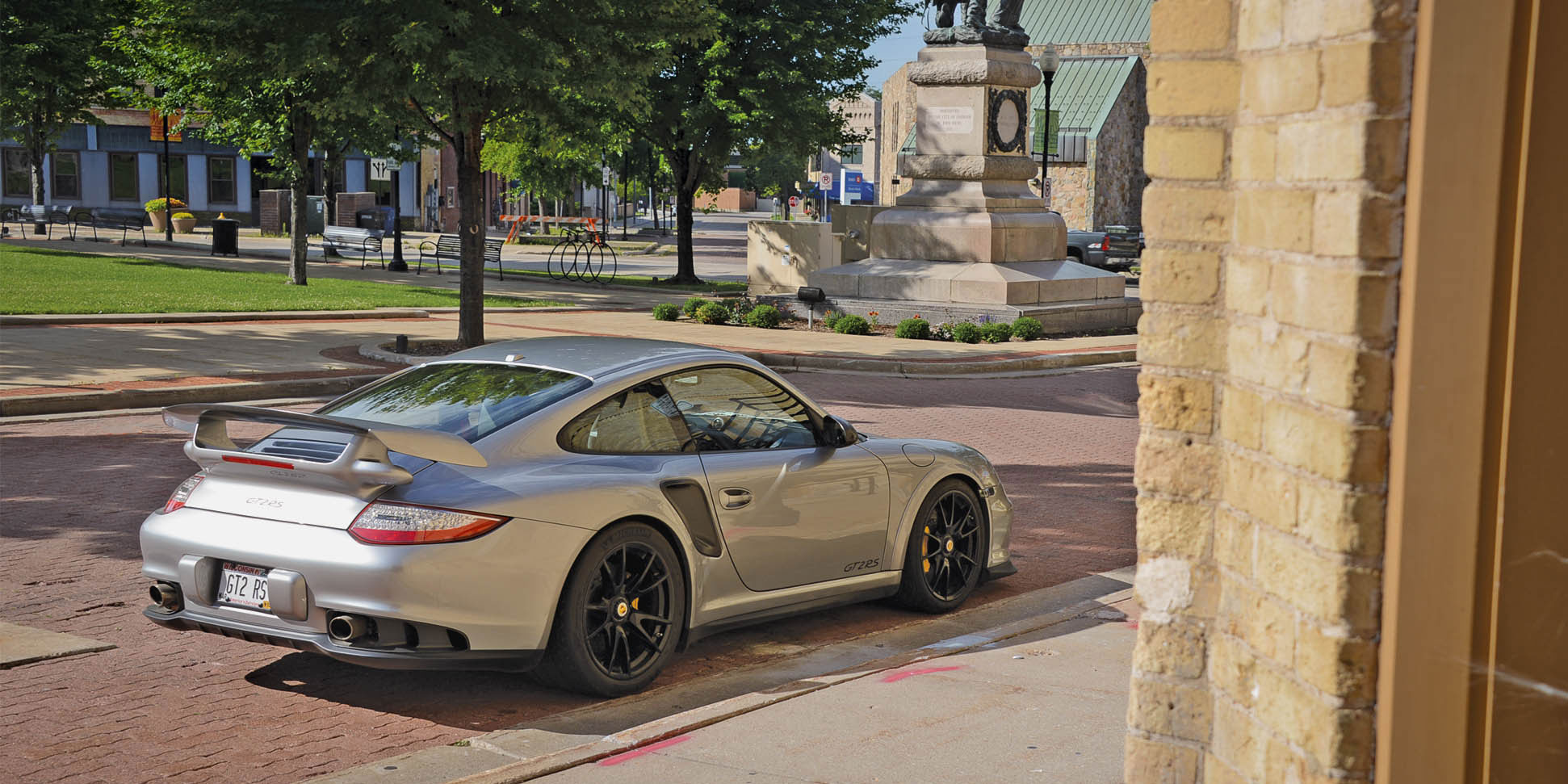
Words and Photos by Jennifer Jensen
Porsche’s 997 version of the 911 GT2 RS is the wild-eyed child of a one-night stand between a 911 GT3 RS and a 911 Turbo, and like selective breeding in horses, the goal was to create something better than its parents.
What Porsche managed to create in the 2011 911 GT2 RS is “the most powerful road-going Porsche ever.” At least at the time. The GT2 RS is also a kicking and screaming, tantrum-laden monster that will occasionally behave itself, and we love it!
It’s all about the breeding, after all.
BY THE NUMBERS
The GT2 RS is an extraordinary numbers car. Try 620 horsepower, 516 pound-feet of torque, 0-60 mph in 3.5 seconds and 0-124 mph in 9.9 seconds.
It is, rear-wheel drive, has a curb weight of only 3,021 pounds (that’s around 400 pounds lighter than a standard turbo!) and a top speed of 205 mph. Simply understated, this car has extremely serious potential.
However, the driving experience is far different than what this potential suggests it should be.
To begin with, it is a very demanding car. Unlike many other modern supercars, you don’t just jump in and drive as fast as possible. There is a learning curve here.
The GT2 RS is a hard car to launch properly. All 516 pound-feet of torque are available at a very low 2,250 RPM. That means wheelspin is inevitable — not only in first gear but also second and third as well.
FEARSOMELY FAST
So, stoplight drag races are a challenge. Even if you get away from the line cleanly and feel comfortable enough to mash the throttle in second gear, the car will still slip its tail and send you sideways into the car that you are racing, assuming it has not been left behind in the dust.
When the turbos kick in this car is relentless — sort of like a bomb exploding right behind you.
According to Andreas Preuninger, Porsche’s head of GT series production cars, the GT2 RS was born out of a desire to conquer the Nurburgring and meet a specific lap time of 7minutes and 27 seconds.
In fact, that goal was so important the development project name for the GT2 RS became “727.” As a result of the company’s determination to meet this goal, Porsche’s motorsports department, the same team that develops Porsche’s racing cars, invested 80,000 engineering hours and just under 435,000 miles of test-driving to get the GT2 RS dialed in exactly the way they wanted it.
The end result? The GT2 RS has a best lap time of 7:18, beating their 7:27 goal by 9 seconds, and besting the standard 997 GT2 by a whopping 14 seconds!
EXPLOSIVE POWER
The GT2 RS’s engine is derived from the GT1 motorsport engine. It differs from lesser 911 engines by using a single mass flywheel, special connecting rods and unique pistons. Prueninger stumbled on his own words when trying to describe the engine response.
“It revs like — it explodes!” he said.
Even that borders upon being an understatement. We couldn’t agree more.
In fact, “explosive” is an excellent descriptor for this turbo torque monster from Porsche.
But the GT2 RS is a double-edged sword. This is really two cars in one: pre- and post-turbo boost.
The pre-boost car is docile and similar in nature to any other 911 with a bit more accuracy and immediacy. Post-turbo, well, let’s just remind you to keep your hands on the wheel and your eyes looking exactly where you want this guided missile to go.
It’s when that boost kicks in that the GT2 RS shows its true colors. There is no smooth transition, slowly introducing more boost. No, no, none of that. It is either ON or off. And when it is ON, you must hold ON!
ALMOST FLAWLESS
The stiffened chassis is derived from the GT3 RS, one of the best-handling cars in the world. It provides the perfect platform for the retuned suspension and massive rear tires. It is quite amazing how all those developmental hours paid off. The suspension, gearbox, steering and tires are all completely in sync to deliver as much information as possible to the driver.
The GT2 RS likes to talk, and it refuses to be ignored. As you spend more and more time with this car, you begin to understand its chatter and can form a dialogue between driver and machine that is totally addictive.
Time is your friend in this car because more and more time allows that relationship to be formed. It also provides the opportunity to recalibrate your brain around the super powers the RS has at its disposal.
To help us acclimate in a safe environment, we took the GT2 RS to an airport so we would have a little extra leeway should something go awry. Fortunately, the weather was cooperative, so we were able to maintain grip.
The car delivered an almost flawless performance.
WEIGHT DISTRIBUTION
Porsche has engineered the fear out of having a car with an engine mass that hangs way out behind you. There is a sophisticated multi-link rear suspension setup to help control the weight at the rear, but that weight actually helps when pushing for faster lap times.
The GT2 RS has a weight distribution of 38% front and 62% at the rear. With RWD, the added mass in the rear helps provide ample traction to get rolling. Again, when turbo boost kicks in, the RS feels like it’s going to pop a wheelie. So there is still a delicate balance to get the best performance.
However, when you are heading into a turn, the massive PCCBs (Porsche Ceramic Composite Brakes) that are standard on the RS help transfer all that weight towards the front, helping this car slow down like an anchor was dropped. The steering is pinpoint accurate, and it provides the same communicative feedback as the GT3 RS.
Turn in is very sharp with just a hint of understeer that is easy to dial out with the throttle. Judicious application of the throttle mid-corner will break that rear end loose and allow drifting, especially with all of the driver’s aids turned off.
It is brutal the way this car lets go and gives up grip, though you can get it right back again if you know what you’re doing.
If you play gently with the throttle through a corner, the weight bias will shift back rearwards slinging the RS out of corners like a jai alai ball being flung out of its cesta.
Perhaps this is the reason that Formula One cars have an even greater rear weight bias.
AN ACTUAL MANUAL TRANSMISSION
Get a long enough straight, like a runway, and the acceleration of the RS is nearly overwhelming. Keep the tach above 2,500 RPMs and enjoy an onslaught of speed that just doesn’t end.
The 6,750 RPM redline comes all too quickly in each gear, but the GT2 RS offers something many other modern supercars do not: an actual manual transmission.
Slamming each progressive gear home in the manual box makes the experience so much more enjoyable. And as long as the tires can maintain traction, you will have unyielding acceleration.
There is just so much power once this rocket gets going.
EXCLUSIVITY
In the end, Porsche has truly created something amazing in the GT2 RS.
It is not a car that wants your attention, it demands it — in every way, shape and form.
Unlike many of its track-focused peers, this is not a street car repurposed for the track. The GT2 RS is a track car that you can put a license plate on and drive around town (careful now).
While it is not as pure and linear as the GT3, it is incredibly nimble and fearsomely fast.
If you are looking for a car that will save your hide under fearsome driving forces through the use of electronic nannies and aids, keep on looking. This isn’t it. But if you are seeking excitement from a raw, focused and aggressive machine that delivers thrills like only the wildest amusement parks can, look no further than the GT2 RS.
If you do land one, you will be in a very fast and exclusive club. To wit, former F1 driver Mark Webber owns and drives one. You cannot get better testimony than that, now can you?
Originally published in 2015
